





Cover Story: AI Special p16

Ultimate Executive Valentine's Gift Guide p62

p04. Meta's Moderation Overhaul
p06. Latest Executive Appointments
p08. Exclusive Interview: Iván Saldaña
p12. Kind Holidays: Real Human Impact
p17. Foreword From The Editor
p18. Exclusive Interview: Damian Stirrett
p22. Porsche AI Vehicle Development
p24. Esther Spring - The Open University
p26. Shairil Yahya - Philips
p28. Reshaping Robotics With Nvidia
p30. The Future of Automation With Jeff Bezos
p32. Keir Starmer on UK AI Leadership
p38. £7m British Business Innovation Drive
p38. Practical AI Assistants For Big Tech
p40. The Future of AI Content Generation
p42. The Next Frontier of Corporate Risks
p56. Discover Superyacht MOKA With YPI
p68. Exclusive Interview: Sasha Selipanov
p72. All New Drop Top from Aston Martin
p74. The Most Exclusive Mercedes-AMG
p80. MB&F's Latest Masterpieces
p82. Omega Returns To the Moon

EDITORIAL
Elizabeth Jenkins-Smalley Editor in Chief editorial@theexecutivemagazine.com
Alice Weil
Business Editor
Jack Bell Lifestyle Editor
Aleks Bond
Travel Editor
Molly Ferncombe Features Editor
Mike Jennings Food & Drink Editor
Aaron Kelly Art Director
SALES
Adam Busby Director of Strategic Partnerships advertising@theexecutivemagazine.com
Nathan Taylor Strategic Partnerships Lead
Elroy Oduor Business Development Manager
MARKETING
Bjorn van den Akker Marketing Director
Jack Salmon
Subscriptions Manager subscribe@theexecutivemagazine.com
Elie Robbins Outreach Project Manager
MANAGEMENT
Francis Falodun
Operations Manager
Ian McDonald Finance Director
COMPANY
©Executive Media Group Ltd
Studio 306 Bonded Warehouse Manchester, M3 4AP
Tel: 0208 1359 527
Company No. 14993504
VAT No. 444948655




Meta's decisive shift away from third-party fact-checking signals a fundamental transformation in social media governance. As Mark Zuckerberg charts a bold new direction for Facebook and Instagram, the move mirrors successful strategies implemented by competitor platforms while potentially reshaping the landscape of digital discourse. This pivotal development arrives at a crucial moment in social media evolution, with significant implications for business leaders and digital strategists
MMeta’s chief executive Mark Zuckerberg unveiled sweeping changes to content moderation across the company’s platforms, marking a significant departure from established protocols. The announcement, delivered through a video statement, outlines the retirement of third-party factchecking systems in favour of community-driven moderation tools, similar to those deployed by X, formerly Twitter.
The strategic realignment reflects broader shifts within the social media landscape, where platforms increasingly favour user-driven content verification over centralised oversight. This transformation arrives during a period of heightened focus on digital expression and corporate governance in the social media sector.
Platform evolution and strategic changes
Meta’s departure from traditional fact-checking mechanisms represents a substantial shift in digital content oversight. Zuckerberg acknowledged previous approaches had resulted in excessive content restrictions, stating that “we’ve reached a point where it’s just too many mistakes and too much censorship.” The new framework emphasises reduced intervention and simplified policies, prioritising user engagement over institutional oversight.
The implementation of community notes, a system previously popularised by X under Elon Musk’s leadership, demonstrates Meta’s willingness to adopt proven methodologies from competitors. This approach empowers users to contribute context and corrections to potentially misleading content, creating a more dynamic and participatory moderation environment.
Operational transformations
The restructuring extends beyond policy changes to include significant operational adjustments. Meta announced the relocation of its content review operations from California to Texas, mirroring similar moves by other technology companies seeking operational advantages in the Lone Star State. This geographical shift suggests a broader strategic realignment within the organisation.
Board composition and corporate direction
Meta’s appointment of Dana White, UFC CEO, to its board of
directors signals the company’s evolving corporate governance strategy. White brings extensive experience in content creation and distribution, potentially strengthening Meta’s position in digital entertainment and user engagement.
Policy implications and user impact
The revised content moderation approach promises reduced filtering of mainstream topics, including discussions around immigration and gender issues. Zuckerberg emphasised the platform’s commitment to enabling users to share diverse perspectives while maintaining focus on preventing illegal content. This recalibration aims to reduce accidental content removal while accepting a potentially higher threshold for controversial material.
Market positioning and industry influence
Meta’s strategic pivot arrives during a period of significant industry transformation. The alignment with successful strategies from competitor platforms suggests a maturing approach to content moderation across the social media sector. This development may influence how other platforms approach content governance and user engagement.
Future outlook
The implications of these changes extend beyond immediate platform operations. Meta’s new direction suggests a fundamental shift in how social media companies approach content moderation and user expression. The success of this strategy could establish new industry standards for balancing free expression with content oversight.
These developments arrive at a crucial moment for social media platforms, as they navigate complex challenges around content moderation, user engagement, and corporate responsibility. Meta’s strategic realignment potentially signals broader industry trends toward user-driven content verification and simplified oversight mechanisms.
The effectiveness of these changes will likely influence future approaches to digital content moderation across the social media landscape. Business leaders and digital strategists should closely monitor these developments as they may reshape user engagement and content strategy approaches across digital platforms.
Ed Morgan has been appointed CEO of DisplayNote, succeeding founding CEO Paul Brown as of January 2025. The appointment aligns with DisplayNote's strategic transformation from a product solutions provider to a technology-driven company focused on embedded solutions and OEM partnerships. The company specialises in SDK-based wireless casting and customised software solutions, backed by Volaris Group.
Jeff Greenspoon has been appointed as Dentsu's first standalone chief global client officer, marking a significant shift in the agency's leadership structure. Reporting to global CEO Hiroshi Igarashi, Greenspoon will develop client-centric solutions while maintaining his current role as Americas chief business officer. His appointment follows a decade-long tenure at Dentsu, where he previously served as CEO of the Canadian business and co-founded digital creative firm Spoke, which Dentsu acquired in 2014.
Emma McGrattan has been appointed Chief Technology Officer at Actian, the data and analytics division of HCLSoftware, after 30 years with the company. Rising from associate engineer, McGrattan launched Actian's first cloud offering and architected core analytics solutions. Her immediate focus as CTO involves integrating recently acquired Zeenea's data discovery capabilities, strengthening the company's end-to-end data management solutions. McGrattan, who holds several patents, will lead technology strategy and innovation while continuing her advocacy for women in tech through mentorship programmes.
Laura Heisman joins Dynatrace as Chief Marketing Officer from January 16, 2024, succeeding Mike Maciag. Heisman brings three decades of enterprise technology marketing experience, most recently serving as CMO at VMware. Her previous roles include vice president positions at GitHub and Citrix. The appointment strengthens Dynatrace's position in unified observability and security, with Heisman focusing on enhancing customer experience, accelerating demand, and driving brand awareness.

Laura Mueller has made Formula 1 history by becoming the sport's first female race engineer, joining Haas F1 Team where she will work with driver Esteban Ocon. The appointment comes as part of a broader restructuring at the US-based team, which includes another significant female appointment - Carine Cridelich as head of strategy. Team Principal Ayao Komatsu emphasised that these appointments were based purely on merit and technical expertise, as the team aims to strengthen its trackside operations.
James Crichton has been appointed Regional Director Middle East & Africa at Rolls-Royce Motor Cars. Currently serving as General Manager, Global Sales Operations at Goodwood, Crichton brings 14 years of experience with the luxury automaker to this role. He previously established the Dubai regional office in 2011 and has held several senior positions including Regional Director for Europe & Central Asia. Based in Dubai, he succeeds César Habib in leading operations across these strategically important markets.
Charlie Horrell has been appointed CEO of hospitality technology provider Vita Mojo, succeeding co-founder Nick Popovici. Horrell brings over 20 years of senior leadership experience and joins from Imagen, where he served as CEO until its acquisition by Reuters in 2023. The appointment comes as Vita Mojo, which provides operational software to more than 150 restaurant brands including Subway, Wasabi and LEON, reports 40% yearover-year growth in 2025.
Thomas Lingard has been appointed CEO of the Centre for Future Generations (CFG), effective March 2025. Bringing 25 years of leadership experience, most recently as Global Head of Sustainability at Unilever, Lingard will focus on balancing technological innovation with effective governance. His extensive background includes advisory roles with Climate Catalyst, the Cambridge Institute for Sustainability Leadership, and the World Economic Forum, alongside academic expertise in Philosophy, Development Management, and AI Ethics. The appointment comes at a crucial time as CFG works to shape the impact of emerging technologies on society.
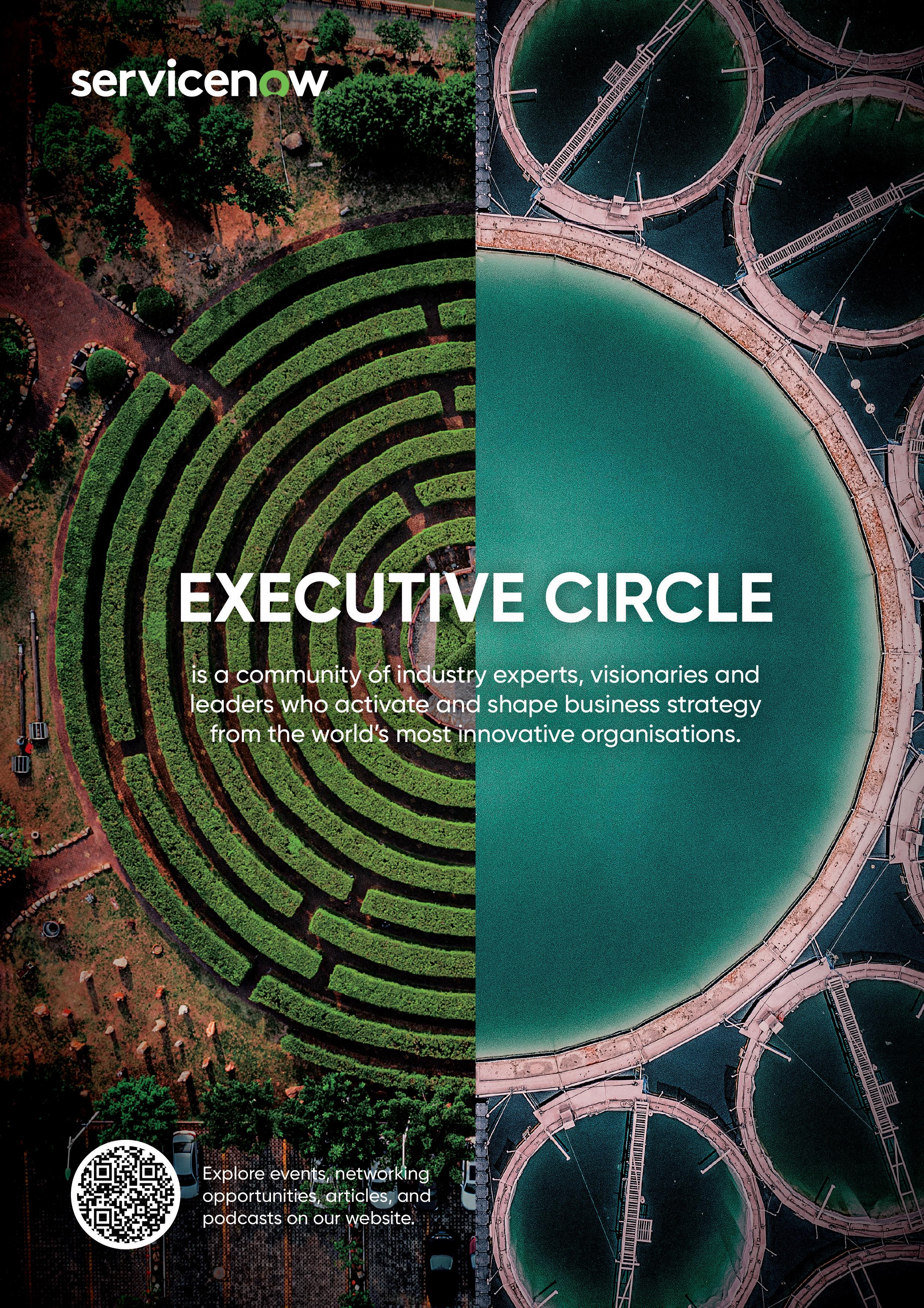

Iván Saldaña, renowned master distiller, has teamed up with seven-time Formula One champion Lewis Hamilton to create Almave, the world’s first distilled non-alcoholic blue agave spirit. This groundbreaking collaboration combines Saldaña’s deep expertise in spirits with Hamilton’s drive for innovation and balance. In this exclusive interview with The Executive Magazine, Saldaña shares how their partnership is reshaping the industry, blending tradition with modernity to meet the demands of today’s discerning consumers

VVisionaries shape industries by challenging conventions, and few embody this ethos better than Iván Saldaña. A master distiller and cofounder of Casa Lumbre, Saldaña has revolutionised the spirits industry by blending scientific expertise with a deep reverence for tradition. His latest venture, Almave, created alongside seventime Formula One champion Lewis Hamilton, is the world’s first distilled non-alcoholic blue agave spirit. This groundbreaking innovation redefines how consumers engage with agave, offering a sophisticated alternative that bridges the gap between authenticity and modern lifestyles.
Can you describe your journey from your early fascination with biodiversity in Jalisco to becoming a prominent figure in the spirits industry? What experiences were pivotal in shaping your entrepreneurial vision?
“My journey began in Jalisco, surrounded by the natural beauty and biodiversity of Mexico. Growing up, I was captivated by the agave plant—not just for its cultural and economic importance but as a resilient organism that thrives in challenging conditions. This fascination led me to study biology, biotechnology, and ultimately pursue a Ph.D. in biochemistry, where I focused on agave fructans. My academic path provided a deep understanding of raw materials, which became the cornerstone of my work in spirits.
“The pivotal moment came when I transitioned from academia to the industry. While working at Pernod Ricard, I realized the limited connection between the scientific understanding of raw materials and the craft of spirits production. That disconnect inspired me to create something new—spirits that honored tradition but
embraced innovation. Founding Casa Lumbre in 2011 with my partners Moisés Guindi and Daniel Schneeweiss was a natural progression, a platform to celebrate Mexico’s biodiversity and cultural heritage in every bottle.”
Every entrepreneurial journey comes with challenges. What were some of the most significant obstacles you encountered while launching Casa Lumbre and its products, and how did you navigate these hurdles?
“Every entrepreneurial journey is a test of resilience. One of the earliest challenges we faced at Casa Lumbre was balancing authenticity with scalability. For example, with Montelobos Mezcal, we were committed to traditional, artisanal production methods, which naturally limit how much you can produce. Scaling without compromising the essence of the spirit required careful partnerships with local producers and a long-term vision.
“Another significant challenge was introducing new categories, like Abasolo Whisky, to markets unfamiliar with them. Whisky made from 100% Mexican corn was unheard of, so educating consumers while remaining true to the product’s story was vital. We navigated these hurdles by focusing on storytelling— connecting people to the soul of the product through its origins and raw materials.”
The non-alcoholic spirits market is growing rapidly. In your opinion, what factors are driving this trend, and how does Almave fit into the changing landscape of consumer preferences?
“The rise of the non-alcoholic spirits market is driven by shifting consumer values. People are more health-conscious, socially aware, and increasingly interested in products that align with their lifestyles. Almave was born from this awareness, but also from a deeper purpose. It’s not just about removing alcohol;

it’s about retaining the authenticity and complexity of agave. Almave provides a way for people to enjoy the depth of Mexican craftsmanship without compromise.”
Almave prides itself on using real Blue Agave and traditional distillation methods. How do you balance innovation with authenticity in a sector that often prioritises profit margins over craftsmanship?
“Authenticity is the foundation of everything we do. With Almave, we use real blue agave and follow traditional distillation methods because the raw material defines the spirit. At the same time, we innovate in ways that honor tradition. For example, while creating a non-alcoholic distilled spirit might seem counterintuitive in an industry rooted in alcohol, it’s a natural evolution for us. We’re showing that innovation and authenticity aren’t mutually exclusive—they can coexist beautifully.”
Your partnership with Lewis Hamilton has brought considerable attention to Almave. How did this collaboration come about, and what unique perspectives does Hamilton bring to the brand?
“The collaboration with Lewis Hamilton came about because we share similar values. Lewis is someone who excels in his field yet remains grounded, curious, and committed to positive change. When we discussed Almave, he resonated with the idea of celebrating tradition while making it accessible to a wider audience. His involvement has brought fresh energy and perspective to the brand.”
How do you see Lewis Hamilton’s influence extending beyond the realm of sports into the business world, particularly in terms of brand positioning and market appeal for Almave?
“Lewis is more than a sports icon—he’s a visionary. He understands how to translate his influence into meaningful action, whether in sustainability, inclusivity, or business innovation. His perspective has helped shape Almave as a brand that’s aspirational yet relatable. He understands that what we create isn’t just a product; it’s a story, a connection to something deeper.”
As a co-founder of Almave in partnership with a figure like Lewis Hamilton, how do you perceive the overlap between the spirits and automotive industries? What lessons from the automotive world can be applied to your work in spirits?
“There’s an interesting overlap between the spirits and automotive industries—both require precision, creativity, and a deep respect for craftsmanship. From Lewis, I’ve learned that success is about pushing boundaries while staying disciplined in execution. Just as engineering excellence drives Formula 1 performance, every detail in the production of spirits matters. Whether it’s the sourcing of agave or the nuances of distillation, precision and attention to detail are everything. The passion for innovation and the relentless pursuit of perfection are lessons that translate beautifully from one industry to the other.”
As a leader in the spirits industry, what key principles guide your decision-making and leadership style? How do you cultivate a culture of innovation and sustainability within your team?
“As a leader, I believe in the power of curiosity, collaboration, and purpose-driven work. My decision-making is rooted in three principles: respect for raw materials, a commitment to sustainability, and a focus on storytelling. I cultivate a culture of innovation by encouraging my team to explore new ideas, challenge conventions, and stay connected to the core values of Casa Lumbre. Sustainability is not an afterthought—it’s embedded in everything we do, from sourcing organic ingredients to creating products that honor local traditions and ecosystems. Ultimately, I see leadership as a way to empower others to bring their creativity and passion to life.”
Looking ahead, what trends do you foresee shaping the future of the spirits industry, particularly in terms of sustainability and consumer health consciousness? How is Casa Lumbre positioning itself to lead in these areas?
“The future of the spirits industry is being shaped by three major trends: sustainability, health-conscious consumption, and authenticity. Consumers today demand transparency—they want to know where their products come from, how they’re made, and the impact they have on the planet. At Casa Lumbre, we’ve embraced these trends by prioritizing sustainable practices and creating products like Almave that cater to health-conscious lifestyles. Additionally, the focus on ancestral techniques, such as nixtamalization in Abasolo Whisky, aligns with the growing appreciation for authentic, culturally rooted experiences. By staying ahead of these trends, we’re positioning ourselves as leaders in crafting meaningful, impactful spirits.”
What advice would you give to aspiring entrepreneurs looking to enter the spirits market? Are there specific opportunities

you see for new leaders in this evolving sector?
“My advice to aspiring entrepreneurs is simple: start with the raw material. Understand its story, its history, and its potential. The spirits industry is about more than just creating a product—it’s about building connections and telling stories that resonate with people. There are immense opportunities in sustainability, non-alcoholic alternatives, and exploring underrepresented cultural heritage in spirits. If you bring authenticity, innovation, and a commitment to quality to the table, you’ll find your place in this evolving sector.”
Finally, can you share an experience where you faced significant adversity as an entrepreneur? What strategies did you employ to overcome these challenges, and how have they influenced your approach to leadership today?
“One of the biggest challenges I’ve faced as an entrepreneur is addressing the balance between tradition and innovation while scaling our products for a global market. This tension comes from the deep responsibility I feel to honor the heritage and craftsmanship behind every spirit we create, but at the same time, making those spirits accessible to a wider audience without losing their soul.
“Take Montelobos Mezcal, for example. When
we launched, our commitment was to work with mezcaleros who followed traditional, sustainable methods, using wood-fired pits and copper stills. But as demand grew, the question became: how do we scale production without compromising the artisanal integrity of the process or the environmental impact? It was a deeply personal challenge because it required navigating a business reality without betraying the cultural values that define mezcal.
“I overcame this by focusing on partnerships with producers who shared our philosophy. We worked closely with local communities, investing in sustainable practices, organic certifications, and long-term agreements that respected their craft and ensured fair compensation. It wasn’t always easy—it required patience, compromise, and a willingness to learn from the people who live and breathe these traditions.
“This challenge taught me a vital lesson: success isn’t about finding shortcuts; it’s about finding better paths that align with your values. As a leader, it’s my job to advocate for those values while ensuring our team has the tools to innovate responsibly. Today, I approach every decision with the same mindset— honoring tradition, empowering local communities, and building a sustainable future for our industry. It’s not the easiest path, but it’s the one that ensures our spirits truly reflect the soul of Mexico.”
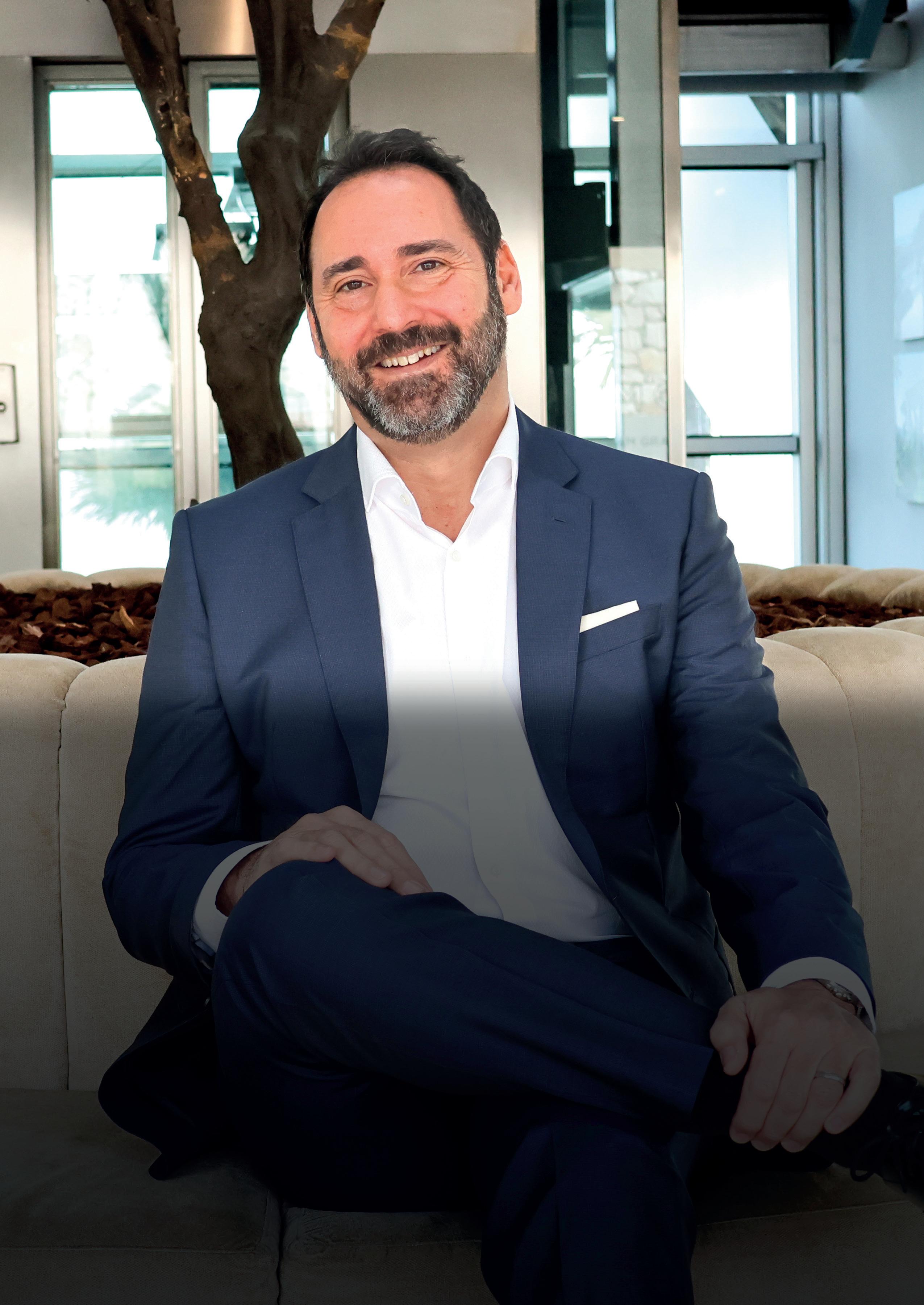
Grant Peires shares the extraordinary stories of two Kind Holidays recipients - a former soldier who found hope after trauma, and a single mother who captured precious final memories with her son. Through their raw and moving testimonies, we discover how a simple act of corporate kindness can become a profound lifeline, demonstrating that in the business of hospitality, the most meaningful returns often transcend the balance sheet. Their stories illuminate why the initiative is now catching the attention of the world's largest hotel franchise operators
An exclusive contribution for The Executive Magazine by Grant Peires, Director of Communications at IDILIQ Hotels & Resorts
TThe last issue of The Executive Magazine featured an article about Kind Holidays, IDILIQ Hotels & Resorts’ initiative that gives free accommodation at our properties to families experiencing unimaginable physical and/or emotional trauma. The article focused on the business case for the initiative and the impact it has had on our team. I talked about how the primary cost – housekeeping – is far outweighed by improved staff morale, increased productivity and enhanced retention rates.
Since 2012 Kind Holidays has worked with numerous charities, giving holidays to families with children with terminal illnesses and severe disabilities, bereaved families where a young parent, child or sibling has recently passed, Military personnel suffering with PTSD and physical injuries and unpaid Carers, who are often caring for a loved one and have had to sacrifice their own financial well-being to do so.
In this follow-up article, I am hoping by focusing on the recipients of these holidays, readers will come to appreciate the immense value and, in some cases, life-changing benefits, these holidays can bring. Our hope is that this programme becomes as fundamental to hospitality as sustainability initiatives.
IDILIQ Hotels & Resorts is a franchisee of Wyndham Hotels & Resorts, the largest hotel franchise operator on the planet. Over the last couple of years, Dimitris Manikis, Wyndham’s EMEA President has met some of the recipient families of Kind Holidays including Sarah Sea and Scotty Darroch. Sarah is a single Mother, who had a last holiday with her two sons at Wyndham Costa del Sol, before her youngest passed away, from a rare degenerative condition, at 10 years of age. Scotty served for ten years as a Corporal and Training Instructor in the British Army in Northern Ireland, Bosnia and Kosovo. In 2013 he was diagnosed with PTSD and Major Depressive Disorder. He credits the holiday he had with us as helping him turn away from heroin use, self-harm and suicide.
Dimitris is helping to secure a speaking engagement for Kind Holidays at Wyndham’s Annual US conference in April. It will give us a chance to share how Kind Holidays has had such a profoundly positive effect on our team and how it can do the same for our fellow franchisees. Our hope is that this will capture the hearts and minds of a substantial number of hoteliers and help spread the initiative and kindness throughout the world. It will also allow Sarah and Scotty a chance to tell 6,500 hotel owners and senior executives their own very personal stories. These are their stories.
Scotty’s Story
“At 4 years old, I was sent to a child lockdown facility for weekends to give my parents a break. I was a minute away from being a statistic of the Lockerbie plane disaster in 1988 aged 12 and when I was 14, I was sexually molested by a so-called family friend. So I decided to rebel against the system getting involved in trouble and ending up within the criminal justice system.
“I decided to join the British Army in 1995; this was the only decision I had to help save my life after the pain and suffering I
went through in my childhood years. After spending over a year of hard training I was deployed to Northern Ireland, but no training and experience could have prepared a young 20-year-old lad for what I was about to witness on the streets of the United Kingdom. I witnessed the worst that humanity could do to each other, something which has had a devastating impact on my life. Not knowing at the time that being involved and witnessing violent horrific atrocities and fighting for our lives would affect and give me a mental trauma.
“I began drinking heavily which led to getting into a lot of altercations and I soon enjoyed the pain that violence provided, as to punish myself, felt like the right thing to do. I have had over 30 recorded concussions, as I put my head in places you never want to, resulting in numerous brain injuries. All these altercations also led to regular visits to military and civilian jails.
“The times were hard and the knock downs were always constant, but nothing I was doing was taking the pain, night horrors and images away. I was tired all the time and finding it very difficult to focus on my job, as now I was a training instructor in Germany. Trying to portray the constant professional soldier to the rest of the regiment was very difficult, alongside drinking 1½ litres of spirits and some beers nearly every day. I started taking a lot of cocaine so I could function at the level where no one knew what was going on, I was now putting on a mask to hide the truth of my secret torment.
“It all came to a head when I couldn’t take the pain of conflict anymore and I ended up on the back streets of Gutersloh sitting amongst rubbish and waste, with my shoes off and my trouser legs rolled up, injecting heroin into my feet. I still recall the dirty needle ripping my skin and releasing this warm orangey brown hell into my veins. I couldn’t deal with what was going on in my brain, I was now addicted, this was the time I needed help and being a soldier this was the hardest decision I’ve ever had to make. This was definitely not what I had envisioned when I wanted to serve my country.
“I was discharged from the Army in November 2004. Since then there have been setbacks with periods of self-harm and multiple attempts to take my own life. Trying to make the images disappear. It took another nine years and in 2013 I finally got the diagnosis of PTSD and due to the years of neglect and hardship on my body also major depressive disorder.
“Now knowing that it wasn’t just me but an illness causing these thoughts and actions there was still a life for living and a chance to become a better husband, that my wife could be proud of. Give Us Time and Kind Holidays was my hand up. It gave us the ability to adapt to our new normal. A life of compromises and plans to act as a safety net if we fell backwards, all in a relaxed, peaceful and scenic place. This was also our chance to reconnect with our loved ones and to look forward for our new future on our road to recovery.
“These holidays are life savers. If I can implore holiday businesses to donate accommodation. You’re not just providing a vital holiday to a military family. You’re not giving us a handout. You’re giving us a hand up and that’s priceless.”
Sarah’s Story
“Phoenix took his first footsteps in the sand when he was seven months old. I didn’t know at the time that they would be his first
and only footsteps, that he would ever take in the sand.
“It was just the three of us. It was always just the three of us, muddling through. I was Mum, Dad, provider and homemaker. I often felt helpless and alone. Most of the time I was. As Rico grew, he became more than Phoenix’s brother, he became my rock and second in command in caring for Phoenix. This was our life for 10 years, one obstacle after another. We couldn’t travel, even out of the house with ease.
“I had to give up working and chasing a career. There was no time to think about anything other than appointments, hospitals, clinics, equipment, specialists, medical terms, adaptations to our home and trying to find help so we could afford to put the basics in place that Phoenix now needed as he declined. I don’t have a family that stuck together in times of hardship, it has never been like that for us. I got into debt and at one point couldn’t afford to feed myself. Amongst all of this we met some amazing people who gave us the consistency and continuity of time and knowledge, that it was enough to keep me fighting.”
Fast forward to Sarah, Phoenix and Rico’s holiday to Wyndham Costa del Sol:
“From the minute we arrived at the resort, I realised just exactly why we were meant to be here. Every single person we met at this resort made us feel like we were family. A family that was wanted, cared for and cherished. You joked with us, welcomed us every single day, with such kindness, warmth, care and love. There wasn’t a single person that made us feel like we were anything other than a normal family. Human kindness and contact means so much to a family like mine. Please whatever you do in your lives, just remember that the love and kindness you showed my children and the families that came before and after us, will never be forgotten.
“My surviving son and I have got this memory for the rest of our lives with his brother. We wouldn’t have had that. We wouldn’t have had the opportunity to do that and felt so normal. It is my absolute heartfelt wish that other companies, hoteliers and holiday providers would be open to considering assisting families like mine.”
Less than two years after their holiday to Spain, Sarah’s son Phoenix sadly passed away. Sarah and Rico are returning to Spain in June, when they plan to scatter Phoenix’s ashes in the sea, just metres from the beach in front of the resort. The place where they created their most cherished memories, watching the sunrise together. Scotty and Sarah are both the most inspirational people and speakers I have ever met. They are true heroes both battling different types of pain and turning their experiences and feelings into hope and help for others.







As we navigate through 2025, artificial intelligence has evolved from an aspirational technology to a transformative force reshaping the foundations of global business. This special section of The Executive Magazine presents an unprecedented exploration of AI's multifaceted impact across industries, featuring insights from leading executives, innovative corporations, and pioneering institutions at the forefront of this technological revolution.
Our coverage begins with an in-depth look at Porsche Engineering's groundbreaking implementation of Large Language Models in vehicle development. Under the guidance of Senior Manager High-Voltage System Development Volker Reber and Lead Engineer Dr. Fabian Hinder, their strategic integration of AI demonstrates how traditional engineering processes are being revolutionized while maintaining exacting standards. Dr. Bruno Kistner, Manager of Data-driven Development, and Dr. Joachim Schaper, Senior Manager AI and Big Data, provide valuable insights into how AI is transforming automotive engineering.
The transformation extends beyond individual companies to national initiatives, as evidenced by Britain's bold £14 billion AI development commitment. Through investments from technology leaders including Vantage Data Centres, Nscale, and Kyndryl, and under the guidance of Matt Clifford as the Prime Minister's AI opportunities advisor and Nobel laureate Sir Demis Hassabis as government expert adviser, we witness how publicprivate partnerships are shaping the future of AI innovation.
The special section features exclusive contributions from thought leaders including Esther Spring from The Open University, who examines the critical intersection of workforce development and AI implementation. Shairil Yahya, Legal Compliance Technology and Solution Director at Philips, offers crucial insights into the strategic framework for AI integration, while Florence Rolland, International Negotiation Consultant and Managing Director of Negotiate Ltd., provides valuable perspective on AI's impact on global business dynamics.
Our coverage extends to groundbreaking developments in the technology sector, where industry leaders like Jensen Huang of Nvidia are pioneering revolutionary platforms like Cosmos for robotics development. We explore how entrepreneurs like Marko Bjelonic, CEO of Swiss-Mile, are attracting investments from Jeff Bezos, and how innovators like Deepak Pathak of Skild AI are pushing the boundaries of autonomous systems.
The governmental perspective is represented through key figures including Prime Minister Keir Starmer and Chancellor of the Exchequer Rachel Reeves MP, who outline Britain's ambitious AI strategy. Dr. Kedar Pandya, UKRI Technology Missions Fund Senior Responsible Owner, and Esra Kasapoglu, Director of AI & Data Economy at UKRI-Innovate UK, provide insights into how these initiatives are being implemented at the institutional level.

UK and Ireland Group VP and GM at ServiceNow
The Executive Magazine's exclusive interview with Damian Stirrett celebrates ServiceNow's exciting £1.25 billion investment in UK and Irish innovation. As the company's UK and Ireland group vice president and general manager, Stirrett shares his enthusiasm for AI's revolutionary potential, offers inspiring leadership insights from three decades of tech innovation, and reveals ServiceNow's ambitious vision to join enterprise platform leaders SAP, Oracle, and Microsoft in shaping the future of business transformation
DDamian Stirrett sparkles with optimism about AI’s extraordinary potential to transform business. As ServiceNow’s UK and Ireland Group VP and GM, Stirrett shares his excitement about the company’s landmark £1.25 billion investment in British and Irish innovation, and charts ServiceNow’s inspiring journey toward becoming the fourth enterprise platform leader alongside SAP, Oracle, and Microsoft.
In this exclusive interview with The Executive Magazine, Stirrett shares powerful insights into successful leadership in today’s dynamic business landscape, drawing from three decades of pioneering technology transformations. From his early entrepreneurial spirit in sales at Compaq to 14 years of breakthrough leadership at Microsoft, he reveals the empowering qualities leaders need to excel, while showcasing ServiceNow’s visionary strategy to help businesses unlock AI’s remarkable possibilities.
During your 30-year career, technology’s become more and more important for every business and every business leader. But what first drew you into tech as an industry and how has it developed over three decades?
“My initial interest was in sales and marketing, and I found a sales role at a business called Compaq. I realised there that I got my energy from talking to people, customers and partners. And that’s still true today. But over the last 30 years, tech has become increasingly central for every organisation and, of course, my interest in what technology can achieve for our customers, and more broadly for everyone, has grown with it.
“The technology industry is so fast-moving and exciting. Once you see the impact that technology can have, and you are part of that fast-moving, innovative industry, it becomes a bit of an addiction. I remember that when I was first starting out in my 20s, I was a little envious of my friends that were in banking. Now they envy what I’m doing! I couldn’t think of a better industry to be in terms of the opportunities it gives you, the pace at which it moves and the importance of the role it plays.”
You’ve come into your leadership role at ServiceNow at a time of huge change, not just in the technology industry but across every dimension, from business and economic to political. What do you think are the qualities that leaders need to thrive in this dynamic and uncertain environment?
“I think that adaptive leadership is really just table stakes now. So, if you’re not an adaptive leader and you can’t work in ambiguity and roll with change then you’re going to struggle. We’ve moved from a time when what you knew mattered most. Now, I think it’s essential to be okay with not knowing all the answers, but you have to have curiosity and a learning mindset to be able to continuously adapt and develop in line with the speed at which your environment is changing.
“That’s something that I experienced at Microsoft, which went through a huge cultural transformation, with that business shifting from a fixed to a growth mindset. That was a massive change, but
I learned so much from it.”
What advice would you give to someone who’s newly into a leadership role? What are some of the key lessons that you’ve learned?
“I’d say that for anyone, no matter what their role or industry, it’s essential to be yourself. That sounds obvious, of course. But it’s very easy to forget. I think I’ve learned that the hard way. I was promoted into a senior role at Microsoft, perhaps a little earlier than I felt I was ready for. I compensated for that by trying to be like my predecessor, who I really admired. But it wasn’t me. A friend and colleague actually called me out on it, and so literally the next day I turned up as myself, and everything went well from there. You have to remember why you’re there are as a leader. Someone has put you in that position because they believe in you. Trying to be someone you’re not is the worst thing you can do.
“I also think that one thing we all need to do better as leaders is talk to our customers more. Many businesses spend a lot of time talking about their customers, but perhaps not enough talking to them. Bill McDermott, ServiceNow’s CEO, recently said that there is only one boss, and that’s the customer. And I agree: it’s absolutely vital that leaders – and everyone else – never lose sight of the customer.”
How do you encourage everyone at ServiceNow to maintain that customer focus? Are there ways that you find particularly effective to make sure your people keep the customer top of mind?
“How you evaluate performance is important here. Obviously, we’re focused on achievement – the ‘what’ – but it’s also important to look at the ‘how’. For a business like ServiceNow, we need to think, for example, about how we’re helping our customers get the most from our platform and everything that it can do for them.
“That’s particularly the case now that everyone – and I mean everyone – is thinking about how they can make the most of AI and GenAI in their business. We’ve gone over the peak of the hype phase, and now the focus has shifted to exploring questions like ‘What can AI do for my business?’, ‘What are the business outcomes we should be thinking about?’, ‘What are the use cases in my industry?’. So to help them answer those questions and more, spending time with customers to understand what they really want and need to achieve is becoming even more important.”
And how is ServiceNow specifically helping your customers to work out how they can use AI in their business?
“I really believe that we can play a pivotal role here. We’re starting to talk about ourselves, and to our customers and partners, as being the AI platform for business transformation. We connect people to products, devices, data and workflow and at the heart of our platform is automation, which is key to generative AI.
“One example is our work with a major telecoms business here in the UK. Their customer service agents are using Now Assist, our AI solution, in all of their call centres. That’s offering agents things like case notes and summarisation, helping them to better understand the customer they’re talking to and what’s the next best action to take. Overall, it’s made agents 55% more productive. But to get to that level of productivity increase, we

first had to automate all of their processes, and they went from having 27 systems to just one.”
So before businesses can make the most of what AI can deliver for them, they need to make sure that they’re properly prepared and set up for it?
“There is justifiably a lot of excitement about what AI will be able to do. But it’s also the case that organisations need to work on the foundations they need in order to make the most from AI’s promise. That means automation, having data in the right shape and so on – and we can help with that too.
“Helping our customers make the most of the tech they have is probably the biggest challenge for our industry as a whole. There are businesses with a ton of ‘shelfware’, they have significant technology debt and they’re only using a small percentage of what the platforms they’re licensing can do for them. As an industry we need to support customers with the foundational work so they can optimise what they already have, drive their deployment, consumption and ultimately value. That’s absolutely how as an industry we’ll grow the trust our customers place in us.”
ServiceNow are investing £1.25 billion in the UK and Ireland over the next five years. What’s the focus of that investment; where are you placing your bets?
“We’re investing in people, real estate and datacentres – and it’s all about growth. I think we have a huge opportunity to become the fourth Enterprise platform (along with SAP, Oracle & Microsoft) for customers to run their businesses on.
“And that’s my ambition for ServiceNow in the UK & Ireland. We have got a super-strong GenAI story, with GenAI infused across the whole platform. Gartner’s saying that 80% of tech vendors will have AI infused in their technology in two years. We’re already there. What we need to do is build on that and our heritage to showcase to business decision makers our value proposition
that now addresses functions right across the enterprise. We have an enterprise platform story to tell, rather than a service management tool to sell.”
Being a fast-growing business is obviously an exciting place to be, but what are some of the challenges that raises. How do you address those?
“We’re evolving as an organisation, and what has got us here in the last five years won’t get us where we need to be in the next five. So, it’s important that we recognise and nurture our talent, but equally important that we hire new people with the new perspectives and new skills we need as we evolve from a product company to a platform company. To that end, I want ServiceNow UK&I to be the best place to work in the industry, I want it to be a destination for the talent in our industry.”
How do you keep people motivated?
“We have a great culture at ServiceNow and deservedly a strong employer brand. We take employee wellbeing really seriously. We have something called Quarterly Growth Conversations, which are regular check-ins with all our people. The top area we focus on in those is all about wellbeing. We also have four wellbeing days a year that are in addition to annual leave, and I have culture champions within the UK business that really think about employees every day in terms of events and initiatives to support them. We also have nine employee belonging groups that represent and advocate for people with shared characteristics. So I think it’s a really great place to work!”
How do you make sure that you maintain your own wellbeing? What are some of the lessons that you’ve learned over three decades that might be useful for other business leaders?
“I think this is personal for each individual. But for me there are some areas of balance that I have to achieve. One is about how I spend my working time. If I become too internally focused and my
time is spent on internal meetings and reviews and so on, then I really notice the difference in how I feel. So, I need to make sure that I’m seeing customers, meeting with partners and continuing to learn.
“But the nature of my role means that I could be attending dinners five times a week, for example. And at one time in my career, that’s exactly what I was doing! But it’s not healthy or sustainable. So, I’ve learned that you need to balance your schedule, carving out the time for yourself and your family and friends to make sure you stay in good shape, both physically and mentally.”
How do you set priorities for how you want ServiceNow to develop in the UK?
“You need to set priorities that are leading indicators of how you’re building a sustainable business. Sometimes, if you’re making your numbers and growing, that success can actually obscure the focus on what’s really going to drive growth in the longer term. For ServiceNow, we need to pay more attention to adoption and consumption, enabling our customers to get the most from this powerful platform we’re providing them with. And we want to be doing bigger, more transformational deals. That means continuing to build deep relationships with our partners. These aren’t the things that I’m measured on, but I am measuring my people on them. That’s because if we improve there, we’ll carry on building a good business.
“And it’s important to check in on those indicators all the time. It’s great to do your offsite at the beginning of the year where you set out and present them. But you have to keep checking in and communicating those leading indicators and strategic priorities, or the organisation will just revert to its standard performance metrics.”
The UK government has just announced an ambitious AI
strategy. How do you think about ServiceNow working in that space, what are some of the opportunities that you see?
“Companies within an industry are beginning to learn from one another, but perhaps more significantly, we’re seeing crossfertilisation across industries. Banks for example, want to learn from retailers, and vice versa. That’s important. But perhaps more significant is that the public sector is more open than ever to learning from the private sector. That makes total sense. For example, DWP operates the largest call centre in the UK. What, for example, could they learn from the telecoms industry about how to automate and bring in the AI-driven approaches that can help improve the service they provide to people who really need it, at the same time boosting efficiency? I think the public sector in the UK is making a very wise and welcome move to centralising their thoughts and strategies on technology.
“But today, the biggest challenge facing them is that hardly anything is automated and there’s a lack of data sharing. We have a platform that can connect data, people and processes and bring in automation. So I feel that we have a role to play in addressing some of the big challenges that the UK public sector faces. And, what’s more, we can help to realise the promise of GenAI in the public sector to which the UK government has just made such a strong commitment.
“With GenAI, we’re in a market defining era. This is a business changer, not just another technology. It’s a board-level discussion. I can’t think of a more profound time in our industry than right now.”
ServiceNow EXECUTIVE CIRCLE is a community of industry experts, visionaries and leaders who activate and shape business strategy, from the world’s most innovative organisations. Explore events, networking opportunities, articles, and podcasts on the website: www.servicenow.com/uk/executive-circle.html


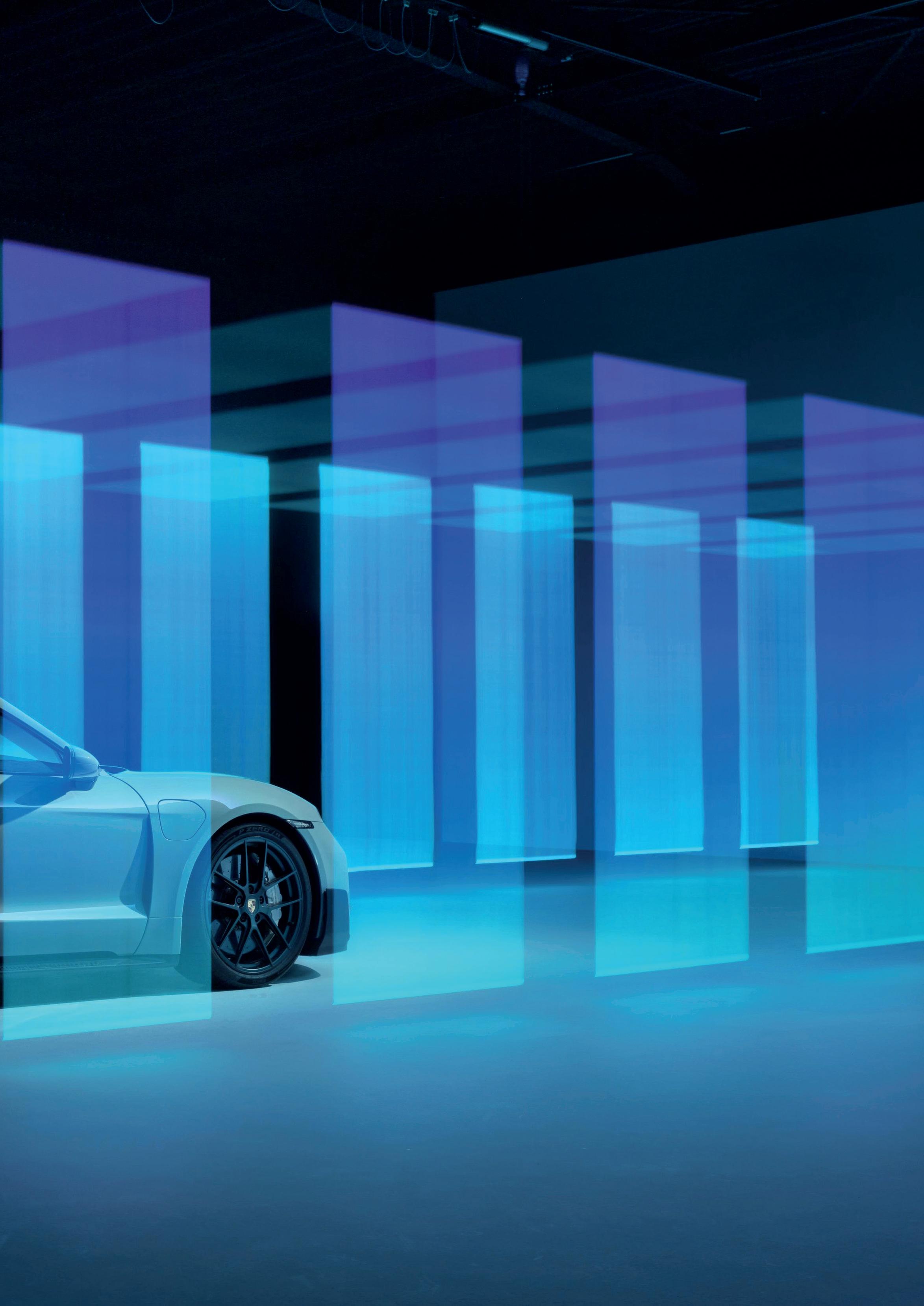
Porsche Engineering leads groundbreaking advancements in automotive development through strategic implementation of LLMs. The marque harnesses artificial intelligence to transform traditional engineering processes, resulting in remarkable efficiency gains while maintaining its legendary standards. This technological evolution marks a significant shift in luxury vehicle development, promising faster innovation without compromising on quality
Porsche Engineering stands at the forefront of automotive innovation, pioneering the integration of Large Language Models into vehicle development processes. The prestigious manufacturer combines commercially available LLM tools with proprietary engineering expertise, creating a sophisticated hybrid approach that dramatically enhances efficiency while maintaining exacting standards.
Traditional automotive development demands countless hours of meticulous documentation review and specification analysis. Porsche Engineering’s revolutionary approach transforms these time-intensive tasks through artificial intelligence, allowing highly skilled engineers to focus on complex problem-solving and innovation.
The challenge of translating customer specifications into technical requirements has historically consumed substantial engineering resources. Porsche Engineering’s implementation of LLMs addresses this challenge head-on, with initial tests showing a remarkable 50 percent reduction in processing time.
Senior Manager High-Voltage System Development, Volker Reber, notes that the traditional manual revision of specifications, while necessary, tied up valuable development resources. The new AIdriven approach streamlines this process significantly, converting thousands of individual information points into standardised formats with unprecedented speed.
Porsche Engineering’s approach extends beyond simple implementation of existing AI tools. The company enhances commercially available models such as ChatGPT and LLaMa with proprietary datasets from completed development projects, creating highly specialised systems tailored to automotive engineering requirements.
This customisation proves particularly valuable when dealing with ambiguous specifications that require contextual understanding. Where conventional software falls short, these enhanced LLMs excel at interpreting meaning from context, demonstrating capabilities that closely mirror human comprehension.
The application of LLMs extends into vehicle testing processes, revolutionising how test data is collected and analysed. Lead Engineer Dr Fabian Hinder highlights how AI integration enables real-time feedback during vehicle testing, allowing immediate identification of similar issues across different models and platforms.
This system significantly improves the efficiency of troubleshooting by eliminating duplicate entries and enabling systematic analysis across the entire range of vehicles. Test engineers receive instant feedback on similar recorded issues, streamlining the documentation process and enhancing cross-platform problem solving.
The integration of specifically designed AI systems alongside human expertise represents a cornerstone of Porsche Engineering’s strategic vision. Rather than outsourcing to regions with lower personnel costs, the company invests in AI tools that amplify the capabilities of its highly skilled workforce.
Dr Bruno Kistner, Manager Data-driven Development at Porsche, emphasises that data-driven development stands as a crucial success factor for the future. The company continues to expand its AI capabilities through strategic partnerships, ensuring sustained leadership in automotive innovation.
Despite significant automation advances, human expertise remains central to Porsche Engineering’s development process. Engineers maintain oversight of AI-generated outputs, ensuring maintained quality standards while benefiting from reduced workload. This hybrid approach combines the efficiency of artificial intelligence with the irreplaceable judgment of experienced professionals.
The system’s effectiveness increases over time through continuous learning from engineer feedback, creating a virtuous cycle of improvement. Dr Joachim Schaper, Senior Manager AI and Big Data, notes that while the AI already delivers impressive results, its capabilities continue to expand with each project.

Generative AI stands poised to reshape organisational landscapes, raising critical questions for leaders worldwide. Through this exclusive contribution to The Executive Magazine, Esther Spring from The Open University, examines the pressing challenges facing decision-makers today. Drawing from her extensive experience in digital transformation, she offers sharp insights into workforce development, digital inclusion and sustainable implementation of AI technologies. Moving beyond theoretical discussions, Spring presents practical strategies for leaders navigating the complex intersection of technological advancement and human-centred leadership
Exclusive contribution by Esther Spring, the Skills & Training Lead AI and Digital Practice at The Open University, for The Executive Magazine.

How do you feel about Generative AI, does your heart sink, do you disengage or are you enthusiastic and constantly finding new ways to use it?
Take a moment to really think about how you feel about it and write down the first three things that come to you. Ask yourself what does this mean for me as a leader, and what does this mean for those I lead?
My three – it’s just another technology; not everyone cares or will use it in a work context; it really helps me day to day, and sometimes it’s quite fun. If you’re a Bridgerton fan or LinkedIn user maybe you had a go at generating your Verizon Bridgerton AI character or the co-author – Your 2024 LinkedIn Rewind?
However, if you did, I wonder if you stopped think about data protection, privacy and copyright considerations. My Bridgerton character I happily shared on social media, the LinkedIn review I chose not, the summary was incorrect – my Top Quote – was not mine.
Generative AI like all technology has issues, not least it does not always get things right. Many of us on a daily basis are trying to navigate what it means for you and your organisation. The legal and ethical considerations are complex, the cost for some is prohibitive, the impact on people – they need rapidly be upskilled, and many are scared their jobs will go. How do you know what your customers want, and how they will engage with it. We are all facing these challenges, while knowing that Generative AI is also creating opportunities and potentially significant benefits to improve our lives for the good.
Like all technology, we will see advancements in areas such health care, public services and education which will have a positive impact. Yet there will always be an inequity at individual and organisational levels, of those who can afford the technology and develop the skills to use it, and those who cannot.
The digital divide is growing, and digital inclusion is a critical area to ensure you are developing strategies to address this. The Lloyds Bank 2024 Consumer Digital Index report highlights that ‘Just 48% of the labour force can do all 20 work tasks’ identified in the Future.now Essential Digital Skills for Work, which does not include the specific considerations for working with Generative AI.
When we think of the UN Sustainable Development Goals, immediately Climate change jumps to the forefront, and we
cannot underestimate the impact Generative AI has on the environment, the power and water required to run the data centres and train and deploy models, can generate in excess of 552 tons of carbon dioxide.
Many of us in reality have little control over the requirements for Generative AI to operate, but what we do all have influence over ensuring those within our workforce have access to quality education (developing their skills and capabilities) and decent meaningful work, that can help to reduce inequalities, and the digital divide.
This requires the ability to really listen to your workforce and understand how Generative AI can make a difference to their roles for the better. Yes, some jobs will disappear, or be replaced, this is something that cannot be avoided, and we will have difficult decisions to make. While some of your workforce will have the ability to adapt and evolve their roles, others will not, these are the people who potentially will be left behind, and struggle to develop the skills required.
It is important not to fall into the thinking that it will be the older generation who can’t adapt, as I have to point out, I’m 50, and I was involved in the development of a lot of the technology and ways of working we use daily. However, we do need to consider that people will be working longer, and with that we have to be mindful that it is not just about the ability to use the technology, but genuinely our ability to process things changes, and we may need adaptions to support this.
At the other end of the spectrum, you cannot assume those starting in the workplace are going to have the skills and aptitude you require. The inequity in the education system is vast, both in terms of access to equipment and qualified teaching staff.
Therefore, you have to take a human centre approach to adopting and developing your workforce. This means really listening to understand the requirements and asking more questions. I spend all day with our digital and data leaders, global technology companies and academics, but it is often the conversation from the least likely people I gather the most useful insights, like our Estates team, my carpenter and quite often my children.
To harness the opportunities and develop your workforce, seek inspiration from all areas of your organisation, and really think about the question I posed at the start – What does Generative AI mean to me?
To find out more about GenAI, adult learning and skills development, I recommend watching the recording from the GenAI: Adult Learning and Skills Conference hosted at The Open University as part of the Milton Keynes AI Festival.

The meteoric rise of Generative AI promises unprecedented opportunities for enterprise transformation, yet many organisations struggle to implement these solutions effectively. Drawing from 25 years of experience in compliance technology and digital transformation, Chartered Accountant and Forensic Accountant Shairil Yahya from Philips presents crucial insights for business leaders navigating this complex landscape. His strategic framework, developed through hands-on experience building GenAI applications, offers essential guidance for organisations seeking to harness this revolutionary technology while mitigating potential risks
Exclusive contribution by Shairil Yahya, Legal Compliance Technology and Solution Director at Philips, for The Executive Magazine

The GenAI Dilemma: To Do or Not To Do (or how to do)
The answer is yes! We should jump onto the GenAI bandwagon. Some would say that it’s the biggest thing since sliced bread. There are a few things that I personally experienced that totally revolutionised the digital world: the invention of personal computers and the internet (and as someone who grew up in the 90s), The Matrix’s CGI. And now we have the GenAI dawn, or mid-morning, kicked off by ChatGPT.
With the realisation that GenAI is here to stay and the riches it promises, every company dreams of the pot of gold at the end of the GenAI rainbow. But as with any adventures that promise immortality, they are fraught with dangers and boobytraps that lurk at every corner, dragons and trolls waiting to tear you apart right after every small victory.
As the reward is greater than the risk, companies will invest in GenAI. But what do you need to consider before embarking on the GenAI journey?
Based on my sleepless nights developing GenAI applications, below are three key factors you may want to consider. Let’s use one GenAI development example – building a GenAI bot that is able to query a monitoring platform using natural language – to discuss the key contributing factors. They are:
1. Determine your starting point for the GenAI journey.
• GenAI now sits atop the digital development tree. Therefore, developing lower-tier activities is necessary to reach the GenAI level. Without this, GenAI will not generate the correct result. This is because it relies on the information from the lower-level activities to feed its engine. Otherwise, Garbage in, Garbage out.
• There are three lower tiers that support the GenAI development and each deserves its own discussion topic, but for simplicity:
◊ Data Requirements and Connection – Data comes in various shapes and forms. So, understand where your data sits, who owns the data and how to extract them.
◊ Building the logical coding – once the data is extracted, it needs to be cleaned and coded to meet your monitoring objectives.
◊ Visualisation & AI – you will then need to define how the results will be visualised and whether you want to include machine learning to enhance the result further.
◊ It goes without saying that before diving into GenAI development, one must have a solid grasp of the
lower-tier activities. Therefore, ensure that you allocate sufficient time to developing them.
2. End product visualisation at the scoping stage.
• This may sound basic and un-sexy. However, even the sexiest system design starts with a well-defined scope. Be ambitious, but be realistic about those ambitions.
• Once the scope has been established, be as clear and descriptive as possible on how the end product should look, including high-level design of key activities to support the GenAI. To build a monitoring system to answer your questions in a natural language, design the conceptual visual user interface at the scoping stage. This would allow the consultant/technical team to understand what you want to achieve. Yes, in this instance, a picture does represent a thousand words or a thousand lines of code.
• The visualisation also helps the development team determine the scope’s complexity and set their time/resources/cost accordingly.
I have seen projects delayed or even collapsed, not because the objective was vague but because the developer team produced a totally different platform interaction from what the project lead had in mind, or the key team members were not able to agree on how the scope should be presented in the platform at the User Acceptance Testing (“UAT”) stage. Hence, start early with endproduct visualisation.
3. Continuous support from management.
• For most of us, GenAi is not a single-step journey, and it is likely not something that can be completed in a single financial budget year. Therefore, a budget has to be requested every year. Hence, continuous management support is essential to ensure project continuity.
• It is also likely that the management is not keen to commit a substantial investment in the project in one go. Therefore, the project has to show something tangible before embarking on the full desired scope. In this instance, the project lead should start with a smaller scope, reducing the variability of the data required and focusing on the most important aspect of the monitoring (e.g. if you want to monitor sales and enquire about the result using GenAI, focus on a region or a product that you know has a solid financial process and clean data, rather than a global scope) to convince the management of the GenAI worth. It is always powerful to show a real result, even on a smaller scale, to generate the proper support.
While the list above is not exhaustive, I hope it provides readers with ideas for approaching any GenAI project. One last thing I would like to mention: not all GenAI solutions offered in the market are created equal. So, choose wisely.

Revolutionary developments in artificial intelligence continue to reshape global industries, with technology titan Nvidia leading the charge. The company's latest innovation, Cosmos, promises to fundamentally transform robotics and autonomous system development through unprecedented AI capabilities. This groundbreaking platform, unveiled at CES Las Vegas, represents a pivotal moment for the future of physical AI systems, offering solutions to longstanding challenges in robotics development
TTechnology leader Nvidia has unveiled its most ambitious project to date, marking a significant advancement in artificial intelligence and robotics development. The company’s CEO, Jensen Huang, revealed Cosmos, a sophisticated AI platform that harnesses generative AI models trained on 20 million hours of realworld robotics and driving footage. This revolutionary system promises to accelerate breakthroughs in autonomous vehicles and robotics by addressing one of the industry’s most persistent challenges: acquiring comprehensive training data.
The platform’s debut at the Consumer Electronics Show demonstrates Nvidia’s strategic vision for the future of physical AI systems. While the company’s GPU business continues to dominate the market, with stock values increasing nearly elevenfold over two years, this latest innovation signals a decisive move towards shaping the next wave of technological advancement.
Nvidia’s position as a market leader stems from its comprehensive approach to technological development. The company’s GPU sales have generated substantial revenue through the current AI boom, yet its strategy extends well beyond hardware provision. By creating Cosmos, Nvidia addresses a crucial market need: the ability to generate highly-realistic, physics-based synthetic data for training autonomous systems.
This platform enables developers to create virtual environments that mirror real-world conditions, significantly reducing the time and resources required for system development. The technology proves particularly valuable for testing complex scenarios, such as autonomous vehicle responses to adverse weather conditions or robotic movement patterns, which would be impractical or impossible to replicate in physical testing environments.
Leading companies across the autonomous vehicle and robotics sectors have already embraced Nvidia’s Cosmos technology. Early adopters include Uber, alongside innovative robotics firms such as Figure and Agility Robotics. The platform has also attracted significant interest from autonomous vehicle developers, including Canadian driverless truck pioneer Waabi and Londonbased self-driving technology specialist Wayve.
Nvidia maintains its position as a technology enabler rather than a direct competitor in the robotics market. The company’s vice president of simulation technology, Rev Lebaredian, emphasises their role as a provider of essential computing infrastructure and development tools, rather than a manufacturer of autonomous systems.
The development of Cosmos builds upon Nvidia’s decade-long investment in AI software, hardware, and simulation technologies. This comprehensive ecosystem approach mirrors the company’s successful strategy with CUDA software in 2007, which catalysed the AI and deep learning revolution of the 2010s. Similarly, their 2019 introduction of Megatron, an open-source AI system, contributed significantly to developments in large language models and influenced architectural advances underlying current AI technologies.
Analysis from Futurum Group suggests Cosmos represents a multi-trillion dollar market opportunity over the next decade. The platform particularly benefits developers working on advanced robotics systems, including humanoid robots, positioning Nvidia at the forefront of this emerging market.
While GPU sales currently dominate Nvidia’s revenue stream, Cosmos represents a strategic investment in future growth. The platform arrives as companies begin deploying robotic and autonomous systems across various sectors, from manufacturing to transportation. However, technical challenges remain, particularly in developing systems capable of fully comprehending real-world complexity.
Market analysts note that Nvidia’s business model remains robust regardless of individual project outcomes. The company’s position as a technology infrastructure provider ensures continued success, even as the industry explores new applications and use cases for advanced AI systems.
The introduction of Cosmos marks a significant milestone for executives and decision-makers in technology-driven industries. The platform’s capabilities suggest fundamental changes in how organisations approach autonomous system development, potentially reducing development cycles and accelerating market entry for new products and services.

Jeff Bezos has strategically positioned himself at the forefront of artificial intelligence and robotics innovation. Through a series of calculated investments totalling $22 million in 2024, the Amazon founder has demonstrated his conviction that autonomous robotics represents the next significant breakthrough in commerce and technology. This shift in investment focus reveals a broader vision for the future of automation and its potential to reshape multiple industries.

TThroughout 2024, Jeff Bezos made decisive moves into the artificial intelligence sector, backing nine companies with a particular focus on AIpowered robotics. This marked departure from his previous investment patterns signals a significant shift in how the billionaire entrepreneur views the future of automation and commerce.
Swiss-Mile, a Zurich-based robotics company, secured Bezos’s attention through an unconventional pitch. The company’s CEO, Marko Bjelonic, utilised Amazon’s renowned 6-Pager format to present his vision for AI-powered delivery robots, leading to a comprehensive hour-long discussion that culminated in substantial funding.
AI-powered robotics stands at a pivotal moment, combining advanced artificial intelligence with increasingly affordable hardware components. This convergence creates unprecedented opportunities for autonomous systems that can operate independently of direct human oversight. The technology draws parallels with the revolutionary impact of the iPhone, where multiple technologies merged to create transformative possibilities.
The robotics sector presents numerous commercial opportunities, particularly in environments where human safety concerns persist. These autonomous systems show promise for deployment in semi-structured settings such as hospitals and warehouses, where they can work alongside human counterparts. Swiss-Mile’s focused approach to delivery automation aligns with Amazon’s historical strategy of mastering specific sectors before expanding into broader markets.
With 750,000 robots currently deployed in its operations, Amazon maintains its position as a global leader in robotics implementation. Bezos’s investment choices reflect potential synergies with Amazon’s operations, as evidenced by the company’s corporate venture capital arm co-investing in Figure AI, Swiss-Mile and Skild AI. These strategic alignments suggest a deeper integration of autonomous systems within the broader commerce ecosystem.
Bezos expanded his portfolio beyond robotics in 2024, investing in notable ventures such as Perplexity AI, an artificial intelligence-powered search engine, and Tenstorrent, a semiconductor design company positioning itself as a competitor to industry giant Nvidia. Additional investments in financial technology and healthcare support services demonstrate a comprehensive approach to technological advancement.
Since his initial $250,000 investment in Google in 1998, Bezos has built an impressive portfolio of 108 startup investments. His early backing of successful ventures including Twitter, Airbnb, Uber and Nextdoor demonstrates keen foresight in identifying transformative technologies. Recent share sales from Amazon, totalling approximately $14 billion last year, provide substantial capital for future investments.
Despite transitioning from CEO to chairman of Amazon in 2021, Bezos maintains active involvement in his venture investments, participating in selection processes and providing guidance to portfolio companies. This hands-on approach, while less intensive than traditional venture capital firms, allows him to shape the development of emerging technologies while maintaining strategic flexibility.
Industry experts suggest autonomous robotics represents the next frontier in artificial intelligence development. Deepak Pathak, CEO of Skild AI, positions robotics as a crucial stepping stone toward artificial general intelligence, while practical applications focus on enhancing efficiency and safety across various sectors.

The government's comprehensive artificial intelligence strategy promises to revolutionise British industry and public services through unprecedented investment and regulatory reform. The latest announcement of a £14 billion private sector commitment marks a decisive shift in Britain's technological ambitions
SSetting out an ambitious vision for Britain’s technological future, Prime Minister Keir Starmer unveiled a sweeping artificial intelligence strategy that places the nation at the forefront of global innovation. The announcement signals a fundamental shift in governmental approach, embracing all 50 recommendations from Matt Clifford’s AI Opportunities Action Plan.
Central to this transformation is a landmark £14 billion private sector investment from three major technology firms – Vantage Data Centres, Nscale and Kyndryl. These commitments build upon £25 billion previously secured during the International Investment Summit, positioning Britain as a primary destination for technological advancement.
Strategic infrastructure development
The government’s strategy focuses heavily on establishing robust technological infrastructure. Vantage Data Centres leads this charge with a £12 billion investment towards creating one of Europe’s largest data centre campuses in Wales, projected to generate 11,500 new positions across the region.
Nscale’s $2.5 billion commitment over three years strengthens Britain’s data processing capabilities, culminating in the construction of the country’s largest sovereign AI data centre in Loughton, Essex by 2026. This facility represents a crucial step toward technological sovereignty.
Revolutionising public services
Healthcare stands as a primary beneficiary of this technological revolution. AI systems currently deployed throughout NHS facilities demonstrate remarkable capabilities: assessing pain levels in nonverbal patients, accelerating breast cancer diagnosis, and optimising patient discharge processes.
The strategy extends beyond healthcare, targeting improvements across planning consultations, educational administration, and infrastructure maintenance. These applications aim to reduce bureaucratic inefficiencies while enhancing service delivery across public sector operations.
Economic implications
International Monetary Fund projections suggest full AI integration could boost productivity by 1.5 percentage points annually. These gains potentially translate to £47 billion yearly for the British economy over a decade, representing significant opportunities for growth and development.
Infrastructure and innovation zones
The establishment of AI Growth Zones marks a significant strategic development, with Culham, Oxfordshire designated as the inaugural site. These zones streamline planning processes and provide enhanced energy infrastructure, creating optimal conditions for technological innovation.
Compute capacity and data management
A twentyfold increase in public compute capacity stands as a
“Artificial Intelligence will drive incredible change in our country. From teachers personalising lessons, to supporting small businesses with their record-keeping, to speeding up planning applications, it has the potential to transform the lives of working people. But the AI industry needs a government that is on their side, one that won’t sit back and let opportunities slip through its fingers. And in a world of fierce competition, we cannot stand by. We must move fast and take action to win the global race. Our plan will make Britain the world leader.”
Prime Minister Keir Starmer

cornerstone of the strategy, complemented by the creation of a National Data Library. This facility aims to unlock public data value while maintaining robust security protocols, providing essential resources for AI development.
Energy considerations
Recognition of AI’s substantial energy requirements led to the formation of a dedicated AI Energy Council, co-chaired by Science and Energy Secretaries. The council collaborates with energy providers to address technological power demands while advancing clean energy objectives, including the exploration of small modular reactors.
Leadership and expertise
Matt Clifford’s appointment as Prime Minister’s AI opportunities advisor strengthens the strategy’s implementation. The addition of Nobel laureate Sir Demis Hassabis as government expert adviser further enhances Britain’s positioning in the global AI landscape.
Corporate investment and job creation
Kyndryl’s commitment to create 1,000 AI-related positions in Liverpool over three years exemplifies the strategy’s potential for regional development. This initiative aligns with governmental objectives to distribute technological advancement benefits throughout Britain.
Future prospects
The strategy represents the first phase of a comprehensive Digital and Technology Sector Plan, scheduled for publication within months. These measures aim to establish Britain as an unrivalled destination for AI enterprises, building upon recent successes in attracting data centre investments.
Through this coordinated approach to artificial intelligence development, Britain positions itself to compete effectively in the global technology race while ensuring the benefits of AI advancement reach all sectors of society. The strategy’s success could fundamentally reshape Britain’s economic and technological landscape for decades to come.
“AI is a powerful tool that will help grow our economy, make our public services more efficient and open up new opportunities to help improve living standards. This action plan is the government’s modern industrial strategy in action. Attracting AI businesses to the UK, bringing in new investment, creating new jobs and turbocharging our Plan for Change”
Rachel Reeves MP –Chancellor
of the Exchequer
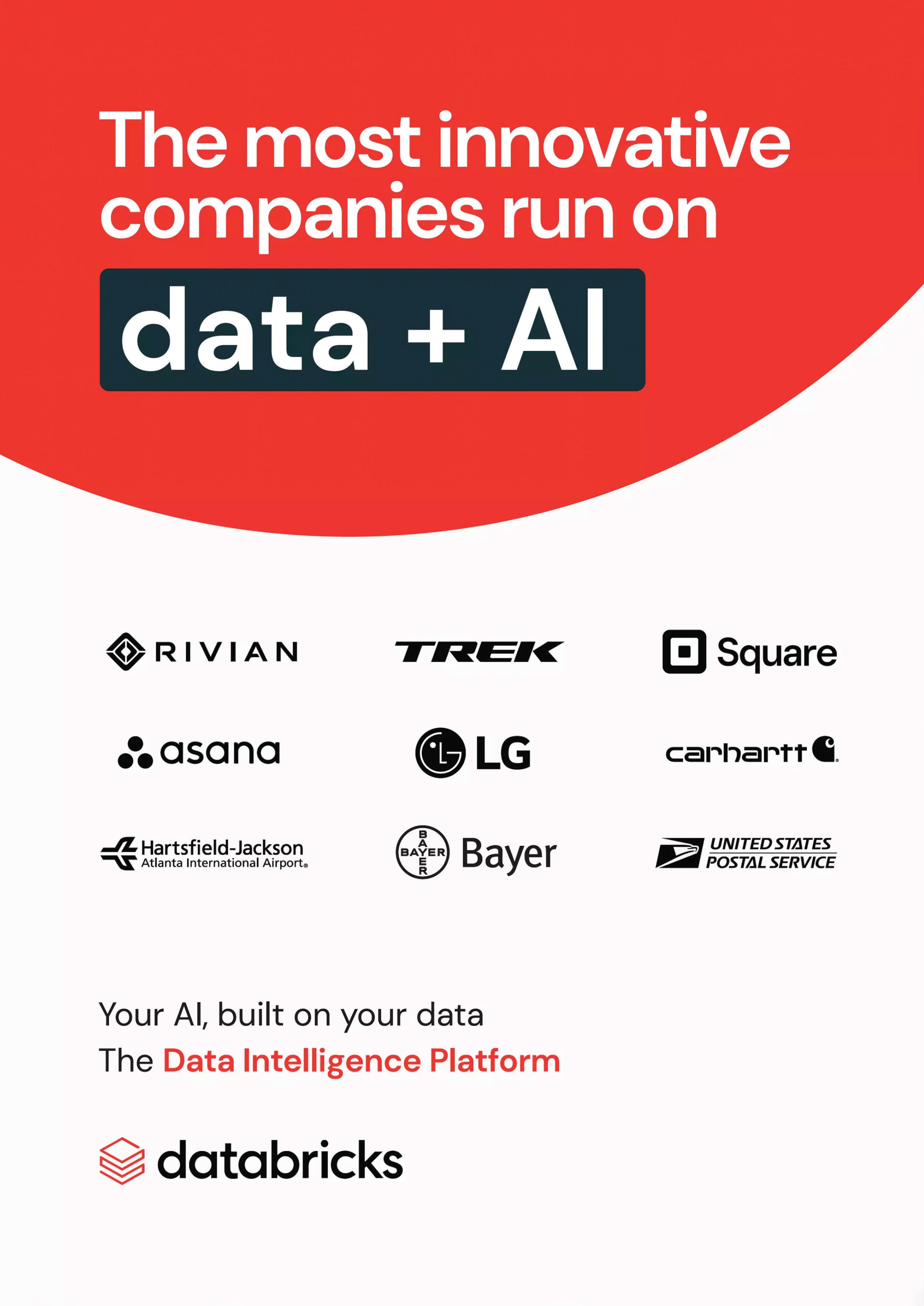
The Government unveils a transformative £7 million funding initiative, propelling 120 groundbreaking artificial intelligence projects across the nation's small business sector. From predictive technology revolutionising road maintenance to sophisticated agricultural systems, the programme showcases how emerging technologies can address practical business challenges while driving economic growth across diverse sectors

SBritain’s position as Europe’s premier destination for artificial intelligence businesses strengthens further with the announcement of a comprehensive £7 million government funding package. The initiative, revealed on 14 January, supports 120 innovative projects designed to revolutionise operations across multiple sectors, from agriculture to construction.
Science and Technology Secretary Peter Kyle emphasises the transformative potential of these investments, highlighting their role in reducing waste, accelerating operations, and enhancing productivity across British enterprises. The funding, distributed through the UK Research and Innovation Technology Missions Fund, targets practical applications that promise immediate business impact.
Practical innovation meets business efficiency
Smart solutions for everyday challenges
The programme focuses on tangible solutions that address pressing business challenges. Notable projects include sophisticated predictive systems for bakeries that optimise production schedules and reduce waste, directly impacting profit margins. These AI-driven forecasting tools analyse sales patterns and market dynamics to determine precise daily production requirements.
Road maintenance receives particular attention through innovative AI technology that identifies potential surface degradation before visible damage occurs. This proactive approach promises significant cost savings for local authorities while reducing vehicle repair expenses for businesses and citizens.

Agricultural innovations feature prominently among the funded projects. Sophisticated AI models help dairy farmers optimise milk production through data-driven insights, while strawberry farmers benefit from new tools that protect and enhance crop yields. These agricultural applications demonstrate how traditional sectors can leverage cutting-edge technology to improve operational efficiency.
The BridgeAI programme, responsible for delivering this initiative, provides more than just monetary support. Participating businesses gain access to specialised training programmes, scientific expertise, and comprehensive guidance for developing their AI innovations. This holistic approach ensures that companies can fully leverage the potential of their technological investments.
Urban planning and infrastructure maintenance benefit from several innovative projects. AI models that predict mould growth in buildings enable proactive maintenance, reducing health risks and property damage. Meanwhile, town planners gain access to sophisticated tools that forecast future transport needs, enabling more efficient resource allocation.
The programme’s scope extends beyond immediate business applications. Recent developments include £1 million in funding for educational AI tools, with nearly half of British teachers already incorporating AI into their work. This integration of AI across sectors demonstrates its potential to drive comprehensive economic renewal.
These investments align with the government’s 50-point AI Opportunities Plan, creating a roadmap for nationwide AI adoption.
Dr Kedar Pandya, UKRI Technology Missions Fund Senior Responsible Owner, emphasises the organisation’s unique position in connecting businesses with research organisations to maximise AI’s economic impact.
Esra Kasapoglu, Director of AI & Data Economy at UKRI-Innovate UK, underscores the fundamental role of AI adoption in supporting national economic growth. The BridgeAI programme continues to expand its reach, enabling more companies to unlock AI’s potential while furthering the development of projects already demonstrating significant impact.
This comprehensive approach to AI integration across British business sectors positions the UK at the forefront of technological innovation, promising enhanced productivity, improved service delivery, and sustained economic growth. The diverse range of funded projects demonstrates AI’s versatility in addressing practical business challenges while driving broader economic development.

Major technology corporations are poised to revolutionise artificial intelligence assistants through groundbreaking developments in generative AI. This technological leap promises to transform voice-activated digital assistants from basic command responders into sophisticated agents capable of executing complex tasks. The advancement represents a significant milestone for business leaders and technology enthusiasts alike, potentially reshaping how executives interact with digital tools in their daily operations

TTechnology giants stand at the threshold of a revolutionary advancement in artificial intelligence that promises to redefine the capabilities of digital assistants. The upcoming transition to AI agents marks a decisive moment for companies like Google, Apple, and Amazon, whose voice assistants have historically struggled to meet user expectations.
The landscape of digital assistance is undergoing a remarkable transformation, driven by unprecedented developments in generative AI technology. This evolution signals a departure from the limited functionality of current voice assistants towards a new era of sophisticated digital agents capable of executing complex tasks with minimal human intervention.
Voice assistants have largely disappointed users since their inception, despite ambitious promises from technology leaders.
When Sundar Pichai introduced the Google Assistant in 2016, he presented it as a transformative tool for task completion. Similarly, Amazon’s Alexa and Apple’s Siri have struggled to move beyond basic functions such as timer setting and music control.
These limitations have resulted in reduced user engagement and trust, with many professionals relegating these tools to simple household tasks rather than meaningful business applications. The gap between promise and reality has created significant opportunities for advancement in the artificial intelligence sector.
The emergence of generative AI has catalysed remarkable growth in the AI agent sector. More than 470 platforms now specialise in this technology, according to Forrester research. Investment in AI agent startups has surged, with deal count rising by 81% over the past year and total investments exceeding £8 billion.
These developments signal a significant shift in how digital assistants might function in the future. Rather than simply providing information, these enhanced systems could actively manage complex tasks such as scheduling meetings, arranging travel itineraries, and handling customer service enquiries.
Major technology companies have made substantial moves to position themselves at the forefront of this evolution. Amazon has invested £8 billion in Anthropic, while Apple has formed a strategic partnership with OpenAI to enhance Siri’s capabilities through ChatGPT integration. Google continues to develop its Gemini model to strengthen its voice search capabilities.
These strategic investments demonstrate the corporate sector’s recognition of AI agents as a crucial next step in technological advancement. The competition between established platforms and innovative startups promises to drive rapid development in this field.
The development of sophisticated voice models represents a significant advancement over traditional large language models. These new systems train on actual voice audio, enabling them to recognise subtle speech patterns and emotional indicators. Companies such as Play.ai, ElevenLabs, and OpenAI lead this specialised development sector.
This enhanced understanding of human speech patterns could revolutionise how professionals interact with their digital tools, making technology more accessible and natural to use.
The potential business applications of enhanced AI agents extend far beyond simple task automation. These systems could transform customer service operations, software development processes, and professional communication methods. The technology shows particular promise for improving accessibility and efficiency in corporate environments.
Recent data indicates growing acceptance of voice-based communication, particularly among younger professionals. YouGov and Vox research shows that 42% of individuals aged 18-29 regularly use voice messages in their communication applications, suggesting a shifting preference in professional communication methods.
Technology companies have begun integrating advanced AI capabilities into new hardware solutions. Google’s Project Astra platform, demonstrated through prototype smart glasses, showcases practical applications such as automatic information retrieval and environmental awareness. Similarly, Facebook’s Orion glasses combine voice commands with gesture control to create intuitive interaction methods.
These developments suggest a future where professional tools seamlessly blend digital assistance with physical workplace requirements, potentially revolutionising how executives and professionals interact with their environment.
This transformation of AI assistants represents more than a technological advancement; it signals a fundamental shift in how professionals might conduct business operations in the near future. As these systems evolve from simple command responders to sophisticated digital agents, they promise to reshape the landscape of professional productivity and interaction.

At the intersection of artificial intelligence and creative production, revolutionary tools are reshaping how businesses communicate. OpenAI's Sora, ChatGPT and Midjourney lead a new wave of AI platforms that enable organisations to produce high-quality content at unprecedented speed and scale. These developments mark a fundamental shift in content creation, offering solutions to age-old challenges of time, cost and resource limitations while maintaining professional standards

AAI is advancing rapidly, with new developments emerging constantly. From concepts to campaigns, tools like Sora, ChatGPT, and Midjourney are streamlining content production, delivering high-quality results without compromising impact.
From SEO-driven blog posts to engaging video ads and eye-catching product visuals, AI is making content production faster, smarter, and more accessible than ever before.
High production costs, long time lines, and limited resources have long been challenges for businesses. Now, AI enables users to produce highquality, engaging content at scale, cutting down on time and effort.
Traditionally, content production required teams of writers, designers, and video editors working within tight deadlines and even tighter budgets. AI is simplifying this process, automating content generation and enabling brands to scale their marketing efficiently.
Text Generation: AI models like ChatGPT can generate blog articles, ad copy, email campaigns, and product descriptions in seconds, reducing content development time.
AI-Generated Visuals: Platforms like Midjourney, Sora, and Canva create high-quality, custom visuals, eliminating the need for design resources or photoshoots.
AI-Driven Video Production: Sora and other text-to-video platforms allow businesses to turn written prompts into high-quality video content, removing the cost and complexity of traditional videography production.
AI enables businesses to react to trends instantly, helping brands capitalise on trends as they happen. Whether it’s a last-minute campaign or a timely social media post, AI eliminates bottlenecks, turning ideas into polished content within hours instead of weeks.
AI reduces the need for large creative teams while maintaining high production standards, enabling brands to reallocate budgets more efficiently, investing in strategy and audience engagement rather than excessive production costs.
AI can tailor messaging to various audience profiles. Whether it’s personalised email marketing, regionspecific ads, or dynamic website content, AI can ensure every interaction feels relevant and meaningful.
AI makes A/B testing effortless. Marketers can generate multiple content variations such as different headlines, images, or video formats within minutes, allowing for analytical optimisation and targeted campaign performance.
When it comes to marketing, it’s all about authenticity and staying true to your brand’s voice. AI might generate the content, but it’s human creativity that adds the emotion, storytelling, and personality that really resonate with people.
AI is proving to be an essential tool for expediting content production, cutting costs, and boosting audience engagement. For businesses, the real question isn’t whether to adopt AI, but how to best utilise it to unlock its full potential.

Deepfakes draining millions from corporate accounts. Artificial intelligence systems corrupted by sophisticated attackers. Quantum computers poised to shatter modern encryption. These scenarios, once confined to science fiction, now represent genuine threats to global businesses. As technology races forward through 2025, cybersecurity challenges demand a new approach to corporate defence—one that anticipates tomorrow's threats while maintaining vigilance against today's attacks
Technological advancements herald an era of unprecedented cybersecurity challenges for business leaders. Traditional attacks persist, yet artificial intelligence has fundamentally transformed the threat landscape, demanding a strategic recalibration of corporate defence mechanisms. The capabilities of attackers continue to advance at remarkable speed, particularly through the deployment of generative AI tools that dramatically reduce the time required for reconnaissance and attack preparation.
The rising sophistication of deepfake technology presents a particularly pressing concern for organisations. Recent data reveals that 60% of people in the United Kingdom have encountered at least one deepfake, while projections indicate that by 2026, 30% of businesses will find their current authentication protocols inadequate against these deceptive tools. The implications are already evident: a Hong Kong-based corporation recently suffered a £20m loss when an employee was deceived by a convincing digital impersonation of a senior executive.
The technology behind these deceptive tools has matured significantly. Earlier iterations of deepfakes often displayed obvious flaws – irregular speech patterns or visual anomalies that served

as warning signs. Modern versions, however, present remarkably convincing reproductions that challenge even trained observers. For high-value targets, cybercriminals find the investment in sophisticated deepfake technology increasingly worthwhile, suggesting a probable surge in such attacks through 2025.
Artificial intelligence systems, while revolutionising business operations, simultaneously create complex vulnerabilities. Organisations implementing AI solutions must navigate an expanding attack surface that proves increasingly challenging to secure. The prospect of AI model corruption presents a particularly troubling scenario, where malicious actors could potentially infiltrate and manipulate systems, leading to operational chaos.
The automated nature of these systems compounds the challenge, as traditional contingency measures prove insufficient against AIspecific threats. Unlike conventional ransomware attacks, where organisations might resort to manual operations temporarily, AIdependent businesses face near-impossible scenarios when forced to operate without their automated systems. The interconnected nature of modern AI implementations means that corruption can spread rapidly across multiple systems, making isolation and recovery particularly challenging.
The Metadata Menace
Metadata surveillance emerges as another critical consideration for executive leadership. While individual metadata elements may appear innocuous, the aggregated analysis reveals patterns that

can compromise organisational security. The sophistication of modern analytical tools means that what once required years of human analysis can now be processed in minutes, creating unprecedented opportunities for adversaries.
Recent events highlight this vulnerability, with major telecommunications providers currently defending against an extensive metadata breach affecting millions of consumers. The challenge lies not merely in protecting the content of communications, but in securing the surrounding contextual information that, when analysed at scale, can reveal sensitive operational patterns and relationships.
The cybercriminal landscape continues to evolve, displaying increasing sophistication in its operational structure. Criminal enterprises now operate with remarkable specialisation, mirroring legitimate business models. This includes dedicated roles for access procurement, technical specialisation, and executive decision-making. This decentralised approach, combined with advanced technical capabilities, presents significant challenges for law enforcement and corporate security teams.
Perhaps most concerning is the looming threat of quantum computing advancement. As this technology matures, currently secure encryption methods face obsolescence. Forward-thinking organisations must consider the implications of “store now, decrypt later” attacks, where adversaries collect encrypted data with the intention of accessing it once quantum computing capabilities mature.
This strategy particularly threatens long-term sensitive information, including intellectual property and strategic planning documents. The advancement of quantum algorithms capable of factoring prime numbers more efficiently than current systems suggests that the theoretical threat is rapidly becoming practical. Military plans, corporate strategies, and personal records transmitted over public networks all face potential exposure once quantum computing capabilities reach maturity.
The convergence of these trends necessitates a proactive approach to cybersecurity. Executive leadership must prioritise robust defence mechanisms while maintaining operational agility. As organisations become increasingly dependent on digital systems, the ability to protect against sophisticated threats becomes not merely a technical consideration but a fundamental business imperative.
Success in this evolving landscape requires continuous adaptation and investment in advanced security measures. Regular assessment of authentication protocols, implementation of quantum-resistant encryption, and development of comprehensive AI security frameworks should form core components of corporate security strategies. The organisations that thrive will be those that recognise cybersecurity not as a discrete technical challenge, but as an integral element of business strategy in the digital age.
The Path Forward
Business leaders must acknowledge that cybersecurity incidents are no longer exceptional events but rather an expected component of modern operations. This reality demands a shift from purely preventative strategies to comprehensive approaches that balance prevention, detection, and resilience. Organisations must develop sophisticated response capabilities while simultaneously working to prevent breaches.
The integration of AI-powered security tools, quantum-resistant encryption protocols, and advanced authentication systems represents not merely a technical upgrade but a strategic imperative for business continuity. As the threat landscape continues to evolve, the distinction between business strategy and security strategy becomes increasingly artificial. The most successful organisations will be those that embrace this reality, treating cybersecurity as a fundamental pillar of business operations rather than a separate technical concern.



Luxurious thermal gardens, Michelin-calibre dining and expertly curated wellness programs await at Britain's most exclusive spa hotels. Join The Executive Explorer as we discover remarkable properties that blend centuries of hospitality tradition with cutting-edge facilities, setting new standards for sophisticated relaxation. From historic Cotswold manors to purpose-built modern havens, each destination offers an exceptional escape for those who demand nothing but the finest
JJoin The Executive Explorer as we discover Britain’s most exceptional spa hotel destinations, where world-class hospitality meets uncompromising luxury. Three essential factors guide our meticulous selection: accommodation that exceeds every expectation, spa facilities that rival global wellness destinations, and dining experiences that showcase culinary mastery at its finest. Each venue must demonstrate remarkable excellence across all criteria to earn its place among this

elite group.
From cutting-edge £10 million spa complexes that redefine modern wellness to historic estates transformed into sophisticated retreats, these properties represent the pinnacle of British hospitality. Our expert reviewers have explored every thermal suite, sampled each tasting menu, and scrutinised countless thread counts to identify those rare destinations where luxury transcends the ordinary and service approaches perfection. These carefully selected properties offer sanctuaries where heritage and innovation combine to create truly extraordinary experiences.


Cheshire

Nestled in the heart of Cheshire, Carden Park Hotel emerges as a masterclass in British luxury hospitality. This historic estate, set across 1,000 acres of pristine countryside, has transformed into an elite destination through strategic investment, including a £10 million spa complex and comprehensive room refurbishments.
From its award-winning wellness facilities to the gastronomic excellence of The Vines restaurant, the property offers a sophisticated escape for discerning executives. Notable features include one of Britain’s largest spa gardens, 197 luxuriously appointed rooms, and a remarkable tasting menu crafted by Executive Chef Graham Tinsley MBE. The estate even boasts its own vineyard, producing up to 6,000 bottles of sparkling wine annually, cementing its position as one of northern England’s premier luxury destinations.


Cotswolds


Tucked away in the serene Cotswolds landscape, Calcot & Spa emerges as an exemplar of refined country hospitality. This distinguished estate, encompassing 220 acres of rewilded terrain, presents a compelling proposition for executives seeking respite from urban demands while maintaining the elevated standards they expect in accommodation, wellness, and cuisine.

From the technical precision of Executive Chef John Jewell’s menu to the specialist CACI facial treatments and thoughtfully appointed Generous Rooms, every aspect of the Calcot experience has been meticulously considered. The establishment pairs sophisticated service with understated luxury, creating an environment where business leaders can authentically decompress while enjoying premium amenities and exemplary British hospitality.

Magnificently positioned within 400 acres of private grounds, Armathwaite Hall Hotel and Spa stands as one of northern England’s most distinguished luxury retreats. This former stately home, framed by Skiddaw Mountain and the tranquil waters of Bassenthwaite Lake, offers 43 luxurious bedrooms, including recently enhanced suites that seamlessly blend historical grandeur with contemporary comfort. The culinary experience is equally impressive, with two distinct dining venues – the refined Lake View Restaurant showcasing Frenchinspired cuisine, and the stylishly informal Grill –both celebrating local Cumbrian produce.
The crown jewel of this remarkable property is its two-storey spa, where wellness reaches new heights of sophistication. Featuring a 16-metre infinity edge pool, innovative thermal experiences, and ten treatment rooms, the spa complex provides an unparalleled retreat for relaxation and rejuvenation. Whether seeking a gastronomic getaway, a spa escape, or simply a luxury break in one of England’s most spectacular settings, Armathwaite Hall Hotel and Spa delivers an experience that exceeds the expectations of the most discerning travellers.






Family-run excellence takes centre stage at The Manor House Hotel and Spa, where contemporary luxury meets countryside tranquillity in East Cheshire. This sophisticated retreat offers 50 stylish rooms, including sumptuous fourposter suites and executive accommodations, alongside the acclaimed Stables Restaurant – a 17th Century Farmhouse where seasonal menus showcase the finest local ingredients through refined gastropub dining.
The crown jewel of this exceptional property is its awardwinning spa, featuring an innovative English Garden concept with over 18 distinct experiences. From the unique swimup bar to hanging day beds beneath elegant pagodas, the spa complex offers an unprecedented approach to relaxation. The thoughtfully designed thermal experiences, including a panoramic Laconium and lavender-infused herbal sauna, combine with expert treatments to create a wellness destination that sets new standards in luxury spa experiences. Whether seeking a rejuvenating escape, a celebration venue, or a business destination, The Manor House Hotel and Spa delivers an experience that exceeds expectations while remaining authentically welcoming.



Keswick, Lake Cotswolds District
Perched majestically on the slopes of Cleeve Hill, Ellenborough Park presents a rare fusion of 15th-century architecture and contemporary luxury. This Grade II listed manor house, fresh from a 2017 renovation, commands sweeping views across Cheltenham’s famous racecourse while offering 61 rooms that blend period features with modern comforts. Behind the original 1485 door lies a fivestar retreat where exposed beams and stone walls meet Chromecast-enabled televisions and underfloor heating.

The property excels in three crucial areas: exceptional dining, precise service, and authentic character. The wood-panelled restaurant delivers standout dishes like a perfectly executed chateaubriand and technical triumphs such as passion fruit soufflé, while the staff demonstrate an impressive balance of professionalism and personality. Though the spa facilities prove modest in size, the heated outdoor pool and 90 acres of pristine grounds provide ample opportunity for relaxation and countryside pursuits – from archery to duck herding – making Ellenborough Park a compelling option for those seeking a sophisticated Cotswolds escape.


Staffordshire


Hoar Cross Hall stands as an exquisite wellness sanctuary, combining timeless luxury with state-of-the-art spa facilities. The distinguished property features a stunning collection of elegantly appointed rooms and suites, complemented by the sophisticated AA Rosette Ballroom restaurant where guests indulge in exceptional culinary experiences. The comprehensive wellness facilities include an expansive spa complex, modern fitness studios offering diverse classes, and tranquil outdoor spaces for activities and relaxation.
At the heart of this prestigious retreat lies the remarkable £3 million Spa Terrace, an architectural masterpiece designed for yearround indulgence. This sophisticated space showcases a magnificent Outdoor Juniper Log Sauna, pristine Spa Pools maintained at an optimal 38 degrees Celsius, and intimate Fire Pits creating an atmosphere of warmth and serenity. The facility is further enhanced by a luxurious Relax Room, extensive treatment areas, and an exclusive Spa Boutique, establishing Hoar Cross Hall as a premier destination for those seeking the pinnacle of wellness and luxury experiences.


The 42 meter MOKA, a yachting masterpiece from the prestigious Sanlorenzo shipyard, now joins the charter fleet through Yachting Partners International. This sophisticated vessel combines innovative design with exceptional amenities, offering an unparalleled charter experience across the Mediterranean. With accommodation for ten guests, state-of-the-art facilities, and a remarkable selection of water toys, MOKA represents the pinnacle of modern yacht charter excellence

LLuxury yachting reaches new heights with the launch of MOKA to the charter market. Built by renowned Italian shipyard Sanlorenzo in 2015, this 42.20-metre vessel masterfully balances sophisticated engineering with luxurious comfort. The yacht’s striking exterior, designed by Francesco Paszkowski, features clean lines and a military-inspired hull finished in an elegant shade of grey complemented by a pristine white superstructure.
The guest experience has been meticulously crafted throughout the vessel’s 469 gross tonnes of volume. Five luxuriously appointed cabins, including a full-beam master suite, provide sophisticated accommodation for ten guests, serviced by a professional crew of nine.
Technical excellence
MOKA demonstrates remarkable capability with her twin CAT C32 engines delivering 1,319 HP each. The yacht maintains a comfortable cruising speed of 12 knots, while capable of reaching 16 knots at full power. Her 4,000 nautical mile range ensures extensive cruising potential throughout the Mediterranean. The vessel’s 9.40-metre beam creates generous interior volumes while maintaining elegant proportions.
Design and accommodation
The interior styling by Sanlorenzo showcases contemporary elegance through neutral tones accented with soft greens and greys. The main saloon presents a sophisticated gathering space with panoramic windows flooding the area with natural light. Five well-appointed cabins offer privacy and comfort, with the fullbeam master suite featuring a private study and luxurious ensuite facilities.
Outdoor living
Multiple exterior spaces have been thoughtfully designed for outdoor enjoyment. The main deck features an infinity pool with contraflow currents, ideal for both exercise and relaxation. The beach club transforms into a waterside haven, complete with a bar and easy access to the comprehensive water toy collection. Sun loungers and alfresco dining areas across multiple decks provide various options for relaxation and entertainment.
Leisure and entertainment
MOKA excels in water-based activities with an impressive array of equipment. Two SEABOBs enable underwater exploration, while the 8.5-metre Lomac tender ensures comfortable shipto-shore transfers. Additional toys include jet skis, paddleboards, and various towable inflatables. The yacht’s gym caters to fitness enthusiasts, while entertainment systems throughout ensure connectivity and relaxation.
Service and crew
Professional service defines the MOKA experience, delivered by nine crew members including the captain. The team demonstrates exceptional hospitality while maintaining the highest standards of safety and discretion. Their knowledge of Mediterranean waters ensures guests experience the finest locations and activities throughout their charter.
Charter expertise
MOKA is available for charter through Yachting Partners International (YPI), a full-service yachting house renowned for guiding clients through every aspect of their yachting journey. With decades of expertise across sales, charter, yacht management and a unique client experience division, YPI ensures seamless service delivery and unforgettable moments aboard this exceptional vessel.






This carefully curated selection brings together extraordinary items that combine artisanal craftsmanship, technological excellence, and sensory refinement. From award-winning spirits to cutting-edge audio equipment and transformative skincare, each piece offers a distinctive way to express affection through unparalleled quality and design
For those seeking the perfect Valentine’s gift that combines sophistication with sensory pleasure, Bang & Olufsen’s collaboration with legendary yacht maker Riva delivers an exceptional audio experience. The partnership has produced two remarkable speakers that marry Danish acoustic excellence with Italian maritime elegance: the portable Beosound A5 and the statuesque Beosound 2 Riva Edition.
The Beosound A5 presents itself as a portable work of art, crafted in navy blue aluminium and adorned with handcrafted mahogany and maple veneer. Distinctive aquamarine blue locking pins catch the light while providing 360-degree sound dispersion. With 12 hours of battery life and IP65 water resistance, this speaker proves perfect for romantic evenings aboard or intimate gatherings poolside.
Its companion, the Beosound 2, stands as a triumph of audio engineering and aesthetic design. The double-anodised navy blue aluminium body features precision-milled grilles and a floating control wheel accented with Riva’s signature aquamarine line. The speaker’s conical form incorporates Acoustic Lens Technology, ensuring an immersive sound experience that fills any space with pristine audio.
Both pieces showcase exquisite craftsmanship – the speakers receive their finishing touches in Bang & Olufsen’s renowned factory in Struer, Denmark, while Riva’s master artisans in Sarnico, Italy, handcraft the wooden elements. The collection successfully bridges maritime luxury with high-end audio, creating statement pieces that resonate with both acoustic excellence and visual sophistication.
£1,999 – £4,299
bang-olufsen.com

Salcombe Gin’s ‘Rosé Sainte Marie’ offers a masterclass in refined spirits crafting. This distinguished gin breaks new ground in a market segment often dominated by overly sweetened alternatives, setting a new standard for premium flavoured gins.
Drawing inspiration from the sun-drenched Mediterranean coastline, this exceptional spirit captures the essence of Southern France’s celebrated dry rosé wines. Its creation showcases meticulous attention to detail, combining Macedonian juniper berries with a carefully curated selection of twelve botanicals, including angelica, fresh strawberries, orange blossom, and rose petals. The addition of fresh lemon, orange peel, and pink peppercorns creates a complex yet harmonious flavour profile.
What truly sets this gin apart is its commitment to purity. Unlike many competitors in the flavoured gin category, ‘Rosé Sainte Marie’ contains no artificial colours, flavours, or added sugars. This dedication to authenticity has earned it numerous industry accolades and positions it as an ideal choice for the discerning palette.
The spirit’s name pays tribute to the historic Sainte Marie lighthouse in Southern France, a landmark that once guided Salcombe Fruit Schooners as they collected their precious cargo of Mediterranean citrus and herbs.

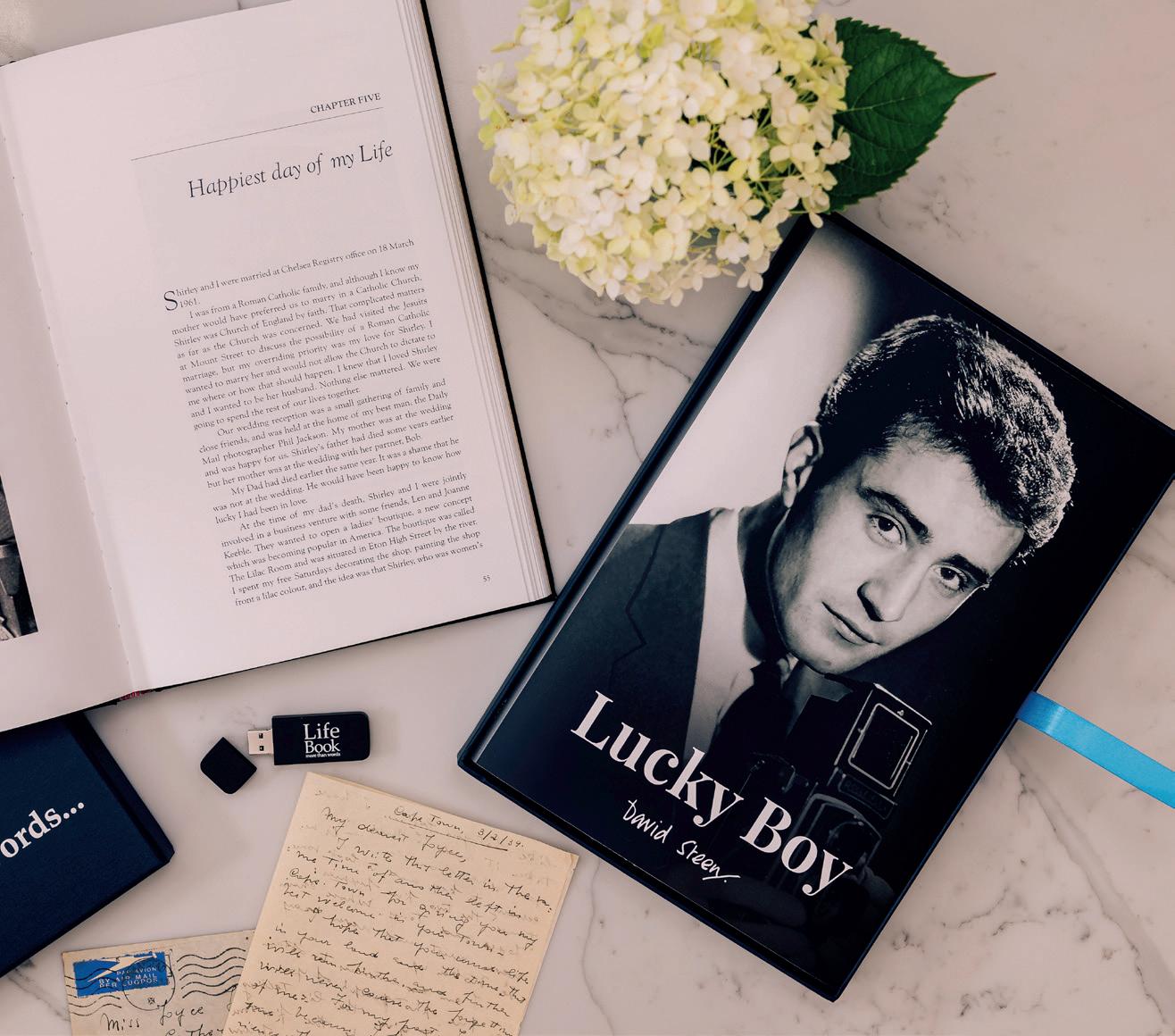
For executives seeking a profoundly meaningful Valentine’s gift, LifeBook Memoirs offers a unique proposition: a professionally crafted biography that transforms personal histories into lasting legacies. This bespoke service pairs world-class writers with your loved ones to create elegantly written narratives that capture their life stories, experiences, and wisdom. More than just a book, it’s an investment in family heritage that preserves cherished memories for future generations. For the executive who values legacy and meaningful storytelling, a LifeBook represents an unparalleled gift that transcends material value, creating a timeless heirloom that will be treasured for generations to come.

For an exceptional Valentine’s gift that marries science with luxury, EviDenS de Beauté’s Night Recovery Solution stands out in the premium skincare arena. This breakthrough product combines Japanese cosmetic technology with French elegance, emerging from three years of intensive research. The formula features proprietary innovations including the 360° Skin Perfecting Complex and Triple Collagen technology, working alongside the breakthrough GlucoSkinX3 ingredient to deliver comprehensive antiaging benefits.
What sets this mask apart is its rich texture and ability to cater to sensitive skin while providing both immediate comfort and long-term rejuvenation. For executives seeking sophisticated skincare solutions this Valentine’s season, The Extreme Mask offers a perfect blend of scientific advancement and luxury experience, making it an impressive gift choice for those who appreciate resultsdriven skincare.
The product’s effectiveness lies in its carefully calibrated combination of active ingredients, which work synergistically during the skin’s natural renewal cycle. This overnight treatment represents the pinnacle of modern skincare technology, combining scientific innovation with luxurious application.
£1,000.00
House of Bali’s handcrafted Tie Dye Belted Kimono offers sophisticated comfort with bohemian flair. This artisanal piece showcases rich, vibrant prints and features an adaptable design that transitions seamlessly from beach cover-up to elegant wraparound dress or luxurious dressing gown. With its widecut sleeves, open front, and waist tie, the kimono delivers both style and comfort, making it an inspired choice for those who appreciate artisanal craftsmanship and versatile luxury in their loungewear. Available online at HouseOfBali.co
£65.00 evidensdebeaute.com

Marking the grand finale of an extraordinary partnership, Aston Martin and Bowmore’s fourth Masters’ Selection whisky delivers a sophisticated culmination of their collaborative journey. This 21-year-old single malt masterfully combines elements from its three predecessors, matured in American oak tawny port casks and Oloroso sherry butts. The whisky offers an elegant flavour profile featuring nutty sweetness, honey, salted toffee, and orange zest, complemented by thyme and milk chocolate notes, before concluding with a subtle peated finish. As the final chapter in this prestigious series, it stands as a compelling Valentine’s acquisition for collectors and connoisseurs alike.


Award-winning Chef Mike Jennings brings over two decades of culinary expertise directly to your home through The Hospitality Hut. With 26 years of refined experience, Chef Mike creates bespoke dining experiences that transform private spaces into intimate restaurants. Whether planning a romantic Valentine’s dinner for two or an elegant gathering, his seasonal menus and impeccable service offer a sophisticated alternative to traditional fine dining. This personalised culinary experience provides a perfect blend of luxury and intimacy for executives who appreciate exceptional gastronomy in the comfort of their own space.
For executives seeking a sophisticated Valentine’s gift that combines British heritage with spy-film allure, Globe-Trotter’s 007 edition carry-on offers a compelling blend of style and practicality. This cabin-approved companion perfectly embodies the jet-setting spirit of Britain’s most famous fictional spy, while delivering the practical functionality needed for quick business trips. Sized ideally for one to three-night stays, this exclusive piece offers both the cachet of the 007 connection and the assurance of always remaining within arm’s reach during travel, making it an inspired choice for the executive who appreciates both cinematic style and travel convenience this Valentine’s season.

Handcrafted using 19th-century French brushmaking techniques, the Altesse Prestige Hairbrush is a masterpiece of luxury haircare. Featuring 100% boar bristles, it naturally distributes oils from root to tip, enhancing shine, reducing frizz, and extending time between washes. Designed for precision, its sculpted handle ensures optimal grip, while an included recycled plastic case doubles as a jewellery or makeup box. Each numbered brush is repairable for life, making it a true heirloom to be passed down through generations.


Apple’s Vision Pro heralds the dawn of spatial computing with unprecedented sophistication. This revolutionary device seamlessly merges digital content with physical space, transforming any environment into a personalized workspace or entertainment centre. Featuring higher resolution than a 4K TV for each eye, it delivers exceptional visual fidelity whether you’re working on a transatlantic flight or relaxing at home.
The Vision Pro excels in professional applications, allowing users to create unlimited virtual workspaces and seamlessly integrate with Mac systems via Virtual Display. Its collaboration capabilities through SharePlay in FaceTime enable real-time team interactions in an immersive environment. Beyond work, it functions as Apple’s first 3D camera, capturing spatial photos and videos with immersive audio, while also enhancing existing photo libraries with spatial capabilities. Compatible with iPhone 16 Pro, iPhone 16, and iPhone 15 Pro for spatial content creation, it represents a perfect fusion of productivity and innovation



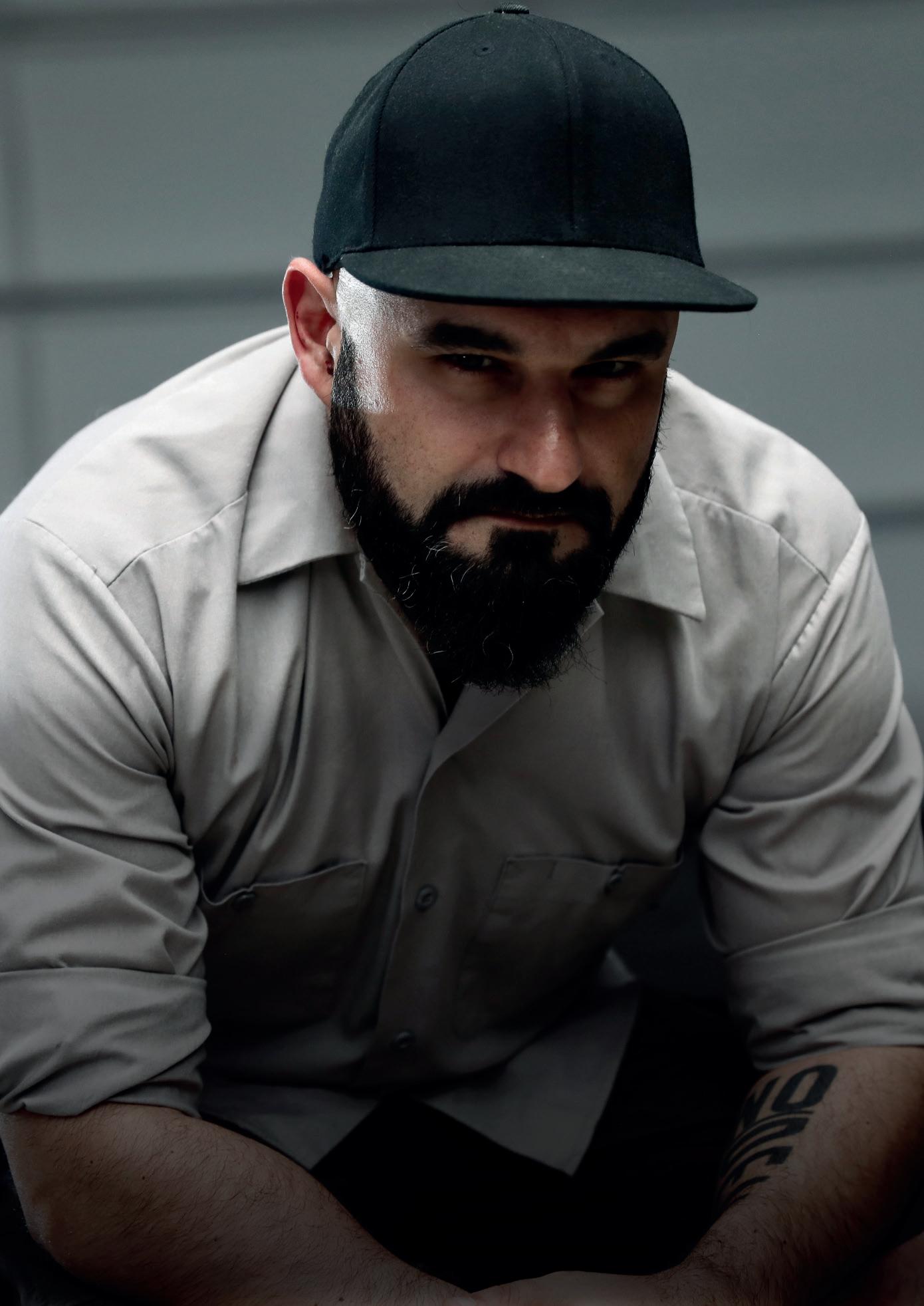
Nilu27 stands as a bold challenge to contemporary automotive design. While major manufacturers rush toward digital integration and artificial intelligence, this nascent hypercar company champions mechanical purity and driver engagement. Through this exclusive interview, we delve into the philosophy, challenges, and aspirations driving this remarkable venture, exploring how two industry veterans are reshaping the future of high-performance vehicles
FFew stories in the automotive world capture the essence of entrepreneurial spirit quite like that of Sasha and Inna Selipanov. The founder of Nilu27 has shaped some of the industry’s most iconic vehicles, from the Bugatti Chiron to the Lamborghini Huracán, yet his boldest move came with the decision to strike out independently. Together with his wife Inna, they have embarked on an ambitious journey to create a hypercar that champions analogue engineering in an increasingly digital age.
The Executive Magazine sits down with the founders of Nilu27 to explore their remarkable transition from industry leaders to pioneering entrepreneurs. Their story is one of calculated risk, unwavering vision, and a deep-rooted passion for automotive excellence. Self-funded from inception through to their first investment round, the Selipanovs have defied industry norms, proving that in a sector dominated by technology and automation, there remains a powerful appetite for pure, driver-focused engineering.
Having designed iconic vehicles like the Bugatti Chiron and Lamborghini Huracán, what motivated you, Sasha, to step away from established manufacturers and pursue your vision of an analogue hypercar in today’s increasingly digital automotive landscape?
Sasha: “Designing and building a car—and an entire brand around it—has been a dream of mine since childhood. Stepping out on my own is about finally bringing that vision to life.
“Over time, I’ve grown increasingly frustrated with where the sports car industry is headed. The focus on technology and innovation, while impressive, has made many modern cars feel less engaging and emotionally rewarding. They’ve strayed from the raw, visceral appeal that made these machines iconic in the first place.
“For decades, I’ve envisioned a hypercar that goes back to the roots of what driving is all about. With the market shifting and the timing finally right, I felt it was time to make that vision a reality.”
Your previous work has shaped some of the most celebrated hypercars of our time. How have these experiences influenced the design philosophy of Nilu27’s flagship model, and which elements from your past projects have informed your current creative direction?
Sasha: “If there’s any overlap, it’s more philosophical than technical—coming from my ongoing pursuit of the ideal sports car. I believe that beauty and brutality are two sides of the same coin when it comes to sports car design and the driving experience. This duality has always influenced my work, but Nilu27 represents the purest, most uncompromising expression of that vision to date.
“Working with established brands meant respecting and building upon their well-defined DNA, shaped by decades of history. While that came with its own challenges, it also meant there were limits to how far you could push. With Nilu27, we’re starting
from a completely clean slate. This freedom has allowed us to create a design philosophy and set of values from the ground up—something truly our own.”
Your decision to self-fund Nilu27’s initial development phase stands out in an industry known for significant capital requirements. How has this approach shaped both your design philosophy and business strategy?
Sasha: “It’s been and continues to be a terrifying commitment. Inna and I had to put everything on the line to make it happen. With just our own resources, we’ve managed to conceptualize, design, and produce our first show car, unveil it on the world’s biggest stage at Pebble Beach Concours d’Elegance, and begin the incredibly complex production development process, including engineering and homologation.
“I’ve always been passionate about lean processes, where every team member is pushed to multitask to the limit. Working on such a tight budget meant that each of us contributed an unfathomable amount of effort to get to this point. For me, the boundaries of traditional job descriptions disappeared long ago—I’ve always gone far beyond what’s expected of a designer. With Nilu27, we’ve taken that to a whole new level.”
Your journey from literature and PR to automotive marketing presents a fascinating trajectory. How has your diverse background influenced your approach to positioning an analogue hypercar in a market that increasingly emphasises digital innovation?
Inna: “I’m not sure that everything happens for a reason, but I think valuable lessons can be learned from almost all experiences (if one is self-reflective). Unlike Sasha, I have never had a clear vision for my career objectives. But I’m the kind of person who loves change and challenges, and I’m never satisfied with the status quo. I carry all of my lessons with me, and believe me, there have been A LOT.
“Being exposed to consumers in essentially all of the roles I’ve ever held has given me an insight into what people actually want, even if they aren’t always able to articulate it. You’re right, the market has pushed digital innovation, but that’s not necessarily what the buyers wanted. Positioning our first model, the NILU, has been fairly straightforward; the amazing reception we have received from the market attests to that.”
As you transition from self-funding to your first investment round, how do you balance maintaining your vision for automotive excellence while demonstrating Nilu27’s potential to external stakeholders?
Inna: “I have to be honest, everything we have done with Nilu27 thus far has been calculated and intentional. Nothing is by accident here. And after 20+ years of experience, this is not our first rodeo. Investors understand that, that’s what they are investing in. They share in our vision and become our partners on this journey. There has to be alignment on this, otherwise it doesn’t make sense for either party.”
Sasha, throughout your career at prestigious manufacturers, which experiences proved most valuable in preparing you for the technical challenges of founding a hypercar company, particularly one that champions traditional engineering?
Sasha: “Each stage of my career has been invaluable in its own way. The first and longest chapter was with traditional OEMs, including Volkswagen Group (mainly VW, Lamborghini, and Bugatti) and Hyundai Motor Company (Genesis). This gave me the chance to refine my design skills through hundreds of projects—spanning everything from full-size models to show cars and production vehicles. It also provided a strong foundation in leadership and team building, which has been essential for this journey.
“My time at Koenigsegg was a completely different experience. It broadened my perspective, giving me insight into engineering and the business side of things. It also allowed me to see firsthand how a smaller, more agile company operates. I feel incredibly fortunate to have had the opportunity to contribute in both worlds, and that combination has been instrumental in preparing me for the challenges we face now.”
While many manufacturers are integrating AI into vehicle systems, Nilu27 champions an analogue approach. Could you both share your perspectives on this strategic decision and its implications for the brand?
Sasha: “It’s about much more than just AI. Modern cars are packed with complex technology designed to make them fade into the background, offering seamless integration with digital ecosystems, effortless ergonomic adjustability, autonomous driving features, and countless sensors that make driving easier— or even optional. While this is great for daily commuters, it’s entirely the wrong approach for sports cars.
“Sports cars should be about engaging the driver. They should amplify the emotional, multi-sensory experience of driving, not dilute it. Our philosophy is to put the driver back in control— minimizing the interfaces that separate them from the machine and, ultimately, from the road. Every decision we made for the NILU, from pairing a naturally aspirated V12 with a manual transmission to ensuring interior features are manually adjustable rather than electronically controlled, was guided by this ambition. It’s about creating a car that connects with its driver on every level.”
Inna: “I can only emphasize what Sasha has mentioned. We operate from the philosophy that form follows function, and we need to clearly state what NILU’s function is. It’s about connecting the driver, the car, and the road – with as little (technology) in between as possible. We’re putting the driver back in the driver’s seat. This will remain Nilu27’s mission moving forward; we will always stay a niche company.”
Inna, having orchestrated Genesis’s European market entry and worked with Koenigsegg’s founders, what key lessons are you applying to Nilu27’s market strategy, especially when communicating your unique value proposition?
Inna: “Well, I wouldn’t say I orchestrated the European entry for Genesis, but I certainly played an important role, particularly with the first 6 showrooms across 3 European markets.
“There are a number of lessons I heavily lean on, picked up from both my own experience and what I have seen done at companies I have never worked in:
“Communication, in general: so many companies do this wrong, or not at all. I don’t really understand why, it’s not exactly rocket science. Your customers and fans put their trust in you. There is a
level of responsibility that comes with that.
“Demystification: marketing messages can be so confusing or unclear. I’ve often read tag lines, even mission and vision statements, where each individual word is understandable, but collectively, it’s unclear what the message is. What’s the point? Just say what you want me to take away from this.
“Accessibility: we are a niche product that comes with a hefty price tag, but ideally, we would be accessible to a lot more people. I think about this a lot, and strive to allow access to the brand especially when access to the product is restricted.”
The hypercar segment demands exceptional attention to detail and precision. How does your collaborative network of global experts contribute to achieving these standards while maintaining your independence?
Sasha: “20 years in the industry have allowed us to build strong connections and lasting friendships with some of the best talents and suppliers in the world. This access to top-tier expertise and resources is one of our biggest advantages as a startup—it’s by no means the first time we’re doing this.
“When word got out about us building something special for Monterey Car Week, we were approached by some of the most renowned companies in the industry offering their support. Our show car is just a glimpse into this collaboration. It features state-of-the-art, officially supplied components like Brembo carbon-ceramic brakes, Michelin Cup2R tires, a CIMA manual transmission, AppTech ultra-light alloy rims, and a bespoke V12 designed by Hartley Engines. We’re just getting started—there are many more exciting collaborations to share in the near future.”
Looking beyond your initial model, what is your longterm vision for Nilu27’s growth in terms of product range, manufacturing capabilities, and approach to emerging technologies like AI?
Sasha: “The NILU is just the start for us. While it’s hugely significant in establishing our product vision and brand pillars, we have plans to take things much further. Our commitment to driver engagement, emotion over technology, and the balance of beauty and brutality will remain central, but there are many more layers to this story that will be revealed in time.
“As for AI, it’s not part of our approach now and won’t be anytime soon. Nilu27’s focus is on building cars that connect with their drivers in the most direct and emotional way possible, and that philosophy will continue to define everything we do.”
Looking at the broader automotive landscape, how do you envision Nilu27’s role in preserving traditional engineering excellence while meeting modern market expectations?
Sasha: “The market is ripe for the kind of disruption we’re bringing. Our car has been very well received—by the public, the press, and, importantly, by customers. The tide is shifting, and we believe our brand and product are landing at the perfect time to capitalize on this change.
“I’m confident that by delivering beautifully designed and engineered cars to our customers, we’ll establish ourselves as a leading voice in the sports car world and set new benchmarks for
what a true driver’s car should be.”
Could you share your perspective on the specific challenges and opportunities facing new entrants in the hypercar market who choose to focus on mechanical purity over digital integration?
Sasha: “The industry has been impacted by a wave of startups that placed all their bets on technology, digitalization, and autonomous driving. Huge investments were made, often with little to show for it, leaving new entrants to face the blowback. We see this as the result of an over-reliance on technology. At Nilu27, we’re taking a different approach—one that is product-driven. Technology should only enhance the driving experience, but in sports cars, it often detracts from it.
“On top of that, bringing a pure driving machine to the road today is harder than ever. Small-series manufacturers like us are held to the same regulations as large OEMs producing millions of cars each year, with almost zero exemptions. For a company building just a few dozen cars per year, it’s an unfair and disproportionate challenge, but one we’re fully committed to overcoming.”
How do you plan to navigate the balance between preserving pure driving experience and meeting potential regulatory requirements that might favour AI-assisted systems?
Sasha: “Like everyone, we have to comply with the laws. If it ever becomes outright illegal to drive internal combustion, analogue cars on public roads, I believe it will limit the market but not eliminate it. Horses are no longer allowed on highways, yet horse riding remains a thriving and highly lucrative industry. Similarly, we will continue to build the most authentic, analogue, and emotional sports cars allowed by law, adapting only when it becomes absolutely necessary.
“Our goal is to preserve conceptual purity while staying within the regulations. If the day comes when the rules force us to transform, we’ll face that challenge just as other industries have, but our commitment to the essence of the driving experience will remain unchanged.”
Given your extensive industry experience and unique approach to building Nilu27, what advice would you offer to entrepreneurs considering ventures in the premium automotive sector?
Sasha: “Only attempt it if you absolutely cannot live without it. The automotive industry is incredibly complex and unforgiving. Cars are some of the most challenging products to design, engineer, and bring to market. Having a unique idea is only the beginning—executing it to its fullest potential is an enormous undertaking.”
Inna: “Besides Nilu27, Sasha and I also run a design and marketing consultancy, Hardline27, where we work with established OEMs and startups alike. We often get contacted by young people, who dream of exactly that: starting their own car company. I tell them all the same thing: you need to work in the industry first, gain experience, establish a network, learn from others’ mistakes. If you don’t know where to begin, you probably shouldn’t.”
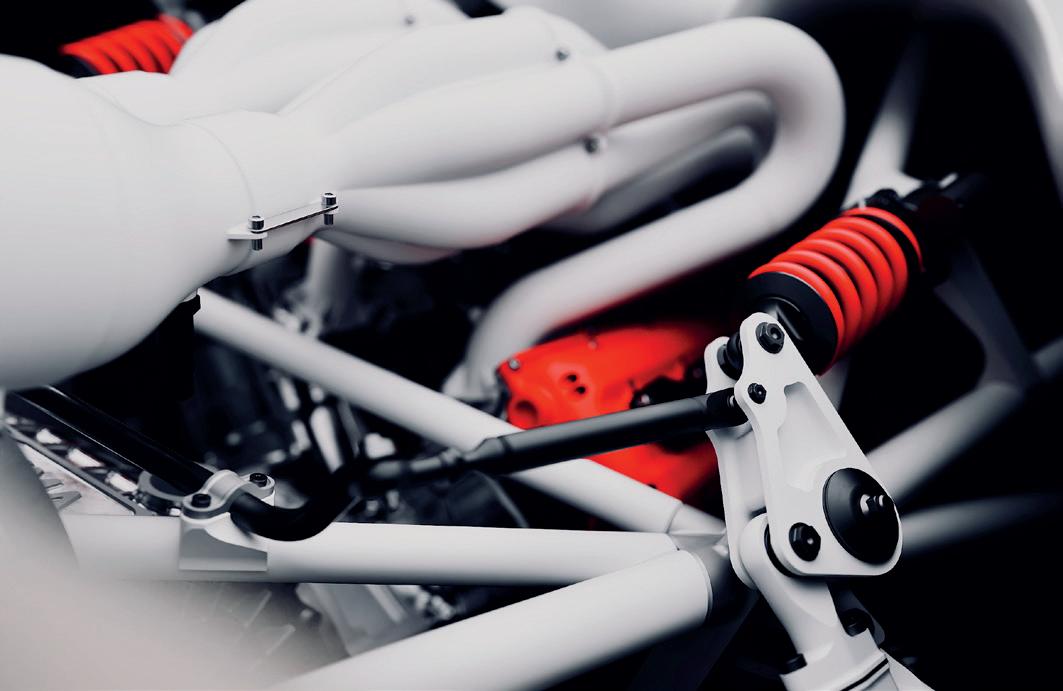





British engineering excellence reaches new heights with the latest Aston Martin Vantage Roadster. Merging phenomenal performance with the visceral thrill of open-top motoring, this 665PS masterpiece represents the pinnacle of convertible sports car design. The fastest-operating automatic roof on the market and a mere 60kg weight penalty over its coupé sibling suggest this thoroughbred brings zero compromises to the party

TThe latest creation from Aston Martin marks a significant evolution in the Vantage lineage, celebrating 75 years of opentop heritage while pushing the boundaries of modern engineering. Engineering teams have achieved what many thought impossible – a convertible that matches its hard-top counterpart blow for blow, while adding an entirely new dimension to the driving experience.
Developed alongside the coupé rather than as an afterthought, this new roadster emerges as a fully-formed character in its own right. The numbers tell a compelling story: 665PS, 800Nm of torque, 0-60mph in 3.5 seconds, and a top speed of 202mph. Yet statistics alone fail to capture the essence of what makes this car special.
Performance prowess
The beating heart of this British thoroughbred is an extensively modified 4.0-litre V8 twin-turbo engine. Power output has increased by an astounding 155PS compared to its predecessor, thanks to larger turbochargers, revised camshaft profiles and optimised compression ratios. The eight-speed paddleshift transmission channels this prodigious power through an electronically controlled limited-slip differential, delivering explosive acceleration while maintaining precise control.
The perfect weight distribution of 49:51 front to rear provides an ideal platform for the race-inspired suspension setup. Bilstein DTX adaptive dampers, specifically tuned for roadster duty, work in harmony with unequal length double wishbones up front and
a sophisticated multi-link rear axle. The result is a chassis that remains poised and precise, regardless of road conditions.
excellence
Convertible sports cars traditionally suffer from additional weight and reduced rigidity – compromises the engineering team refused to accept. Through innovative use of weight-optimised shear panels and strategic structural reinforcements, the roadster actually exceeds the coupé’s lateral stiffness in certain areas. The entire conversion adds just 60kg to the overall weight – a remarkable achievement in this category.
The Z-fold roof mechanism exemplifies the attention to detail lavished on this car. Operating in just 6.8 seconds at speeds up to 31mph, it stands as the fastest fully automatic convertible roof currently available. Eight levels of insulation ensure that with the roof up, occupants enjoy refinement levels comparable to the coupé.
The Vantage Roadster’s aesthetics demonstrate that beauty need not be compromised by function. The dramatically angled windscreen flows seamlessly into high waistlines, creating classic sports car proportions that look equally striking with the roof up or down. The enlarged signature grille increases airflow to the powerful engine by almost 30 percent, while contributing to the car’s predatory presence.
Three new paint options join the palette: Iridescent Sapphire, Satin Iridescent Sapphire and Bronze Flare. The convertible roof itself offers customisation through Black, Red, Blue or Black and Silver options. Twenty-one complementary colours are available for painted liveries, while four distinct 21-inch wheel designs can be specified with various finishes.
The cabin showcases Aston Martin’s next-generation infotainment system, developed entirely in-house. A 10.25-inch Pure Black touchscreen takes centre stage, offering full online connectivity and intuitive gesture control. Critical functions retain physical switches, ensuring drivers can maintain focus on the road ahead. The standard 390w 11-speaker audio system delivers an impressive acoustic experience, while audiophiles can opt for a bespoke Bowers & Wilkins upgrade.
The Vantage Roadster’s performance credentials extend beyond straight-line speed. Massive 410mm front carbon ceramic brake discs, gripped by six-piston monoblock calipers, provide faderesistant stopping power. Bespoke Michelin Pilot Sport S 5 tyres,
specifically developed for this application, deliver exceptional grip while maintaining steering feel and progressive handling characteristics.
Sophisticated electronic systems monitor the car’s behaviour through six-axis sensors, allowing the ESP system to optimise its responses to both road conditions and driving style. An innovative Advanced Traction Control system offers eight distinct settings, providing drivers with the confidence to explore the car’s considerable capabilities safely.
The new Vantage Roadster, available from Q2 2025, combines raw performance with refined luxury in a package that celebrates the joy of open-air motoring. Through meticulous engineering and unwavering attention to detail, Aston Martin has created a convertible that demands no compromises while delivering an unforgettable driving experience.


Mercedes-AMG has unveiled their most visceral creation yet - the PureSpeed. Limited to just 250 units, this roofless and windscreenfree thoroughbred pays homage to motorsport heritage while pushing the boundaries of modern engineering. With 585 PS of raw V8 power and Formula 1-inspired safety features, it delivers an unfiltered driving experience that speaks to those who demand the extraordinary
RRaw speed meets technical sophistication in Mercedes-AMG’s latest masterpiece, the PureSpeed. This radical two-seater strips away conventional barriers between driver and road, creating perhaps the most engaging driving experience ever to wear the three-pointed star.
Taking inspiration from legendary racing machines like the 300 SLR, while incorporating modern Formula 1 technology, the PureSpeed represents a bold statement about the future of exclusive performance vehicles. Limited to just 250 units worldwide, it launches the prestigious Mythos series – MercedesBenz’s new ultra-exclusive product line.
Racing heritage meets cutting-edge design
Traditional motorsport cues blend seamlessly with modern aerodynamic excellence across the PureSpeed’s dramatic silhouette. The long bonnet flows into a distinctive shark nose front end, featuring design elements shared with the revolutionary Mercedes-AMG ONE hypercar. Most striking is the Formula 1-inspired HALO safety system, which replaces traditional A-pillars while providing crucial rollover protection through a bifurcated tubular steel structure. LED strips illuminate this safety feature from below, creating an otherworldly presence at night.
The devil truly lives in the details. Aerodynamic carbon fibre elements contrast against sensuous bodywork, while partially transparent wind deflectors protect occupants from turbulence without compromising the car’s pure aesthetic. The 21-inch forged aluminium wheels feature unique carbon fibre covers –fully enclosed at the rear for reduced drag, while open at the front to optimise brake cooling.
Pure performance
Beneath the sculpted bonnet lurks AMG’s renowned 4.0-litre V8 biturbo engine, producing 585 PS and 800 Nm of torque. These figures translate to explosive real-world performance: 0-100 km/h takes just 3.6 seconds, while top speed reaches 315 km/h. The lack of any windscreen means even modest speeds feel dramatically more intense, accompanied by an unfiltered V8 soundtrack that resonates through every fibre of your being.
Technical excellence
Mercedes-AMG’s engineers have left no stone unturned in the pursuit of dynamic excellence. The AMG SPEEDSHIFT MCT 9G transmission employs a wet starting clutch instead of a traditional torque converter, reducing weight while sharpening throttle response. Power reaches the road through the fully variable AMG Performance 4MATIC+ all-wheel drive system, constantly adjusting torque distribution between axles for optimal traction and stability.
Advanced aerodynamics and chassis control
Active aerodynamics play a crucial role in the PureSpeed’s




performance envelope. An extendible rear spoiler seamlessly integrates into the boot lid, automatically adjusting its angle above 80 km/h based on various parameters including speed and lateral acceleration. A hidden carbon fibre profile in the front underbody creates a ground-effect venturi, literally sucking the car towards the tarmac at speed.
Innovative AMG ACTIVE RIDE CONTROL suspension replaces conventional anti-roll bars with hydraulic elements that respond in milliseconds, delivering both precise handling and remarkable comfort. Active rear-wheel steering further enhances agility at lower speeds while improving stability during high-speed manoeuvres.
The cockpit showcases Mercedes-AMG’s attention to detail through a sophisticated two-tone colour scheme in crystal white and black. AMG Performance seats feature unique flowing designs
inspired by aerodynamic principles, while providing exceptional support during spirited driving. A bespoke IWC Schaffhausen analogue clock takes pride of place on the dashboard, mounted on visible carbon fibre in a glossy black housing.
The experience extends beyond the vehicle itself. Each PureSpeed comes with specially designed helmets matching the car’s finish, complete with an intercom system for clear communication even at speed. A protective weather cover and custom-made indoor car cover ensure this exceptional machine remains pristine when not in use.
Through the PureSpeed, Mercedes-AMG has created a visceral celebration of automotive excellence that pushes the boundaries of what’s possible in a road-legal vehicle. For the fortunate few who secure one of the 250 examples, it promises an unparalleled driving experience that perfectly balances heritage with cuttingedge technology.


Two decades of horological audacity culminate in MB&F's latest masterstrokes - the LM Perpetual Longhorn and LM Sequential Flyback Longhorn. Limited to just 20 pieces each, these anniversary timepieces showcase the brand's innovative spirit through their distinctive elongated lugs, technically brilliant movements, and striking aesthetic combinations. These remarkable pieces mark the beginning of a year-long celebration that promises to redefine contemporary watchmaking yet again
TEvolution of excellence

Twenty years ago, Maximilian Büsser embarked on a revolutionary journey that would transform the landscape of haute horlogerie. What began as a sketch of Horological Machine No.1 has evolved into a powerhouse of creativity, employing over 60 craftsmen and producing more than 20 exceptional calibres.
“It is like a dream come true, only I never dreamt it,” muses Büsser, reflecting on his company’s remarkable trajectory. The sentiment perfectly encapsulates the brand’s ethos – pushing boundaries that weren’t even visible when the journey began.
The story behind these anniversary timepieces traces back to 2009, during the conceptual phase of the first Legacy Machine. A striking design featuring extended lugs – dubbed ‘horns’ – initially posed practical challenges regarding strap attachment points. The dilemma forced designers to shelve the concept temporarily.
Twelve years later, innovation struck. The solution emerged brilliantly simple: dual spring bar holes allowing wearers to adjust the strap position according to their wrist size. This breakthrough manifested in a unique LM1 prototype, crafted in stainless steel with glossy black dials against a rhodium-plated base plate – a combination that proved challenging to perfect but spectacular in execution.
Technical mastery meets visual distinction
Both anniversary pieces showcase MB&F’s technical prowess while introducing fresh aesthetic dimensions. The stainless steel cases house movements of extraordinary complexity, while the signature long horns add an architectural element that transforms their presence on the wrist.
The glossy black lacquer subdials contrast magnificently against rhodium-plated base plates, with blued hands providing an additional layer of refined detail. Each timepiece represents a masterclass in finishing, demanding painstaking attention to eliminate even microscopic imperfections.
Perpetual innovation
The LM Perpetual Longhorn demonstrates why MB&F earned its GPHG award. Stephen McDonnell’s revolutionary 581-component movement reimagines the perpetual calendar completely. Traditional perpetual calendar drawbacks disappear thanks to his “mechanical processor” design, which prevents date-skipping and gear jamming through automatically deactivating adjuster pushers during calendar changes.
Sequential brilliance
Following its sibling’s technical excellence, the LM Sequential Flyback Longhorn represents MB&F’s first venture into chronographs. McDonnell’s innovative “Twinverter” binary switch enables multiple timing modes – independent, split-second, cumulative and lap-timer functions coexist within one mechanism. The addition of flyback capability elevates its utility from racetrack to cockpit.
Celebrating collaboration
These commemorative pieces honour Stephen McDonnell’s pivotal role in MB&F’s journey. From assisting with Horological Machine No.1’s final development to creating some of the brand’s most complex movements, McDonnell exemplifies the collaborative spirit at MB&F’s core.

OMEGA's latest horological masterpiece brings the mysteries of space directly to the wrist. The new Speedmaster Moonphase Meteorite doesn't merely tell time - it narrates a cosmic story through genuine space-faring materials and groundbreaking mechanical innovation. This remarkable timepiece features actual meteorite from both Earth and lunar impacts, while simultaneously tracking the Moon's phases as viewed from both hemispheres of our planet
The relationship between timekeeping and astronomy stretches back millennia. OMEGA’s newest creation, the Speedmaster Moonphase Meteorite, elevates this ancient connection to unprecedented heights. Each
43mm timepiece serves as a mechanical planetarium, combining space-worn materials with sophisticated engineering to create something truly extraordinary.
This remarkable feat of watchmaking prowess demonstrates why OMEGA remains at the forefront of horological innovation. The new release brings together genuine lunar meteorite, iron meteorite, and state-of-the-art movement technology in a package that manages to be both scientifically significant and aesthetically striking.
Cosmic materials meet mechanical mastery
A face from the stars Each dial begins its journey as a slice of iron meteorite, transformed through either black PVD or galvanic grey coating. The natural crystalline patterns formed over millions of years in space ensure no two pieces are identical. These distinctive Widmanstätten patterns serve as a reminder that the owner wears a genuine piece of cosmic history.
Dual hemisphere innovation Perhaps the most captivating feature resides at 6 o’clock, where twin Moon displays crafted from authentic lunar meteorite track the satellite’s phases. This revolutionary system shows the Moon’s illumination as viewed from both northern and southern hemispheres simultaneously. The starfield backdrop preserves a moment in history, accurately depicting the celestial
arrangement visible from Bienne, Switzerland during the Apollo 11 lunar landing.
Engineering excellence The manual-winding Co-Axial Master Chronometer Calibre 9914 powers this celestial dance. This newly developed movement achieves exceptional accuracy while remaining impervious to magnetic fields up to 15,000 gauss. Each movement undergoes rigorous testing by METAS, ensuring performance worthy of its spaceage materials.
Distinctive variants
The dark explorer The first variant embraces darkness with its black PVD-coated meteorite dial. Eighteen-karat white gold hands and hour markers provide brilliant contrast against the cosmic backdrop, while a black ceramic bezel with white enamel tachymeter completes the sophisticated appearance.
The celestial voyager The second option features a galvanic grey meteorite dial set against a blue PVD-coated base. Blue ceramic bezel work and matching PVD-coated gold markers create a more subtle aesthetic, complemented by white gold subdial hands.
Wearing the cosmos Both versions come mounted on meticulously finished bracelets incorporating OMEGA’s patented comfort release system. This practical addition ensures the wearing experience matches the technical sophistication within.
The Speedmaster Moonphase Meteorite showcases what becomes possible when traditional watchmaking expertise meets space-age materials and engineering. Through this remarkable fusion of cosmic elements and mechanical precision, OMEGA has created a watch that tells the story of humanity’s endless fascination with the stars above.

